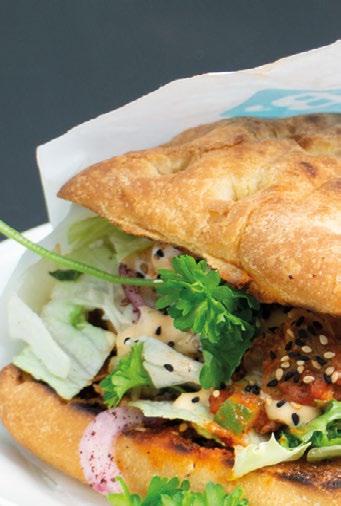












Tampere offers many great places to enjoy the stunning city views. Head out to Pyynikki ridge to climb up to the observation tower and marvel at the views opening to Lake Pyhäjärvi and Lake Näsijärvi.

During a nice walk in the forest, don’t forget to test the delicious doughnuts in the observation tower’s café! Also, check out Näsinneula observation tower and Moro Sky Bar at Solo Sokos Torni Hotel.
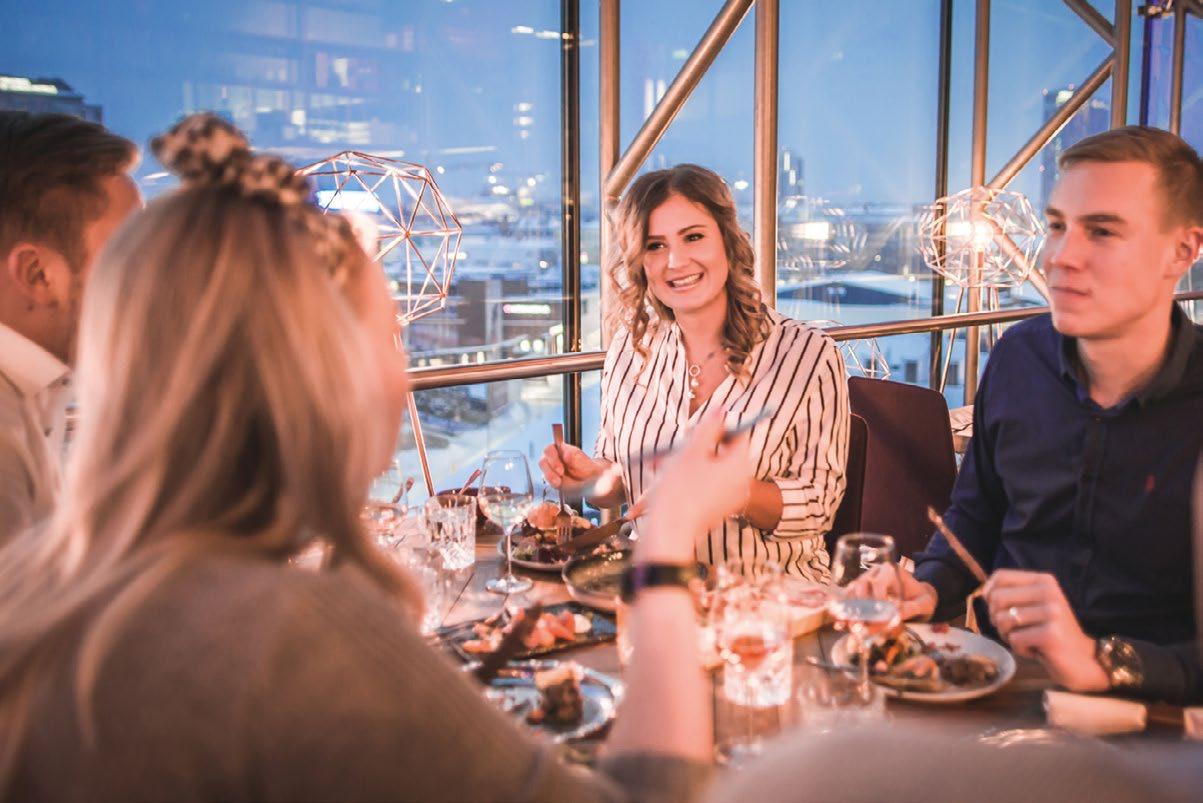
In Tampere, the lakeside starts from the city center, and so do the forests. Breathe some fresh forest air in Pyynikki nature reserve. For some accessible nature reserves, head to Kintulammi or Hervanta – to Hervanta you can even take the tram! Located a stone’s throw away from Tampere city centre, Kauppi Sports Park with a large forest area on the shore of lake Näsijärvi, offers multiple options for outdoor activities. During winter you can ice skate and ski on the ice of the lake Näsijärvi.
See visittampere.com for equipment rental info.
Tampere is famous for its sauna culture and the city region has over 50 public saunas to choose from. Here are some of our favorites.
The oldest public sauna in Finland. Rajaportti is one of the most traditional saunas in the region. Let the locals show you how it’s done!
Kuuma is a unique combination of sauna, restaurant, a cozy bar and a restaurant. Enjoy the heat, dip into the Ratina bay and have some food or drinks in the restaurant.
KUUMA SAUNA & RESTAURANTTampere is known for its vivid cultural life. The city is famous for its theatres, live music and various festivals. Popular culture venues like Tampere Hall, Olympia-kortteli, Tullikamari and G Livelab offer cultural performances all year around. Check the program on the venues’ own websites. Tampere is also quite possibly the most interesting city of diverse museums in Finland – themed museums from art to police and from spies to history of labor offer exploring for every taste. See what is happening in the city on visittampere.com

Museum Centre Vapriikki has many ongoing exhibitions at the same time and the only Moomin Museum in the world invites you and your family for a magical journey into the fairytale world. Another great place for the whole family is Tallipiha Stable Yards If you’re lucky, you might experience a horse carriage ride there! A great place to visit is the Aquarium in Särkänniemi. For active families the ice skate rink with an equipment rental in Sorsapuisto park and escape rooms in different locations are recommended. See more on visittampere.com
Are you Hungry for Tampere? Savor the tastes and atmosphere of this unique city and find your favorite dishes from its vast range of restaurants. Local, organic, vegan, burgers, wings, oriental… Tampere has it all. A great place to visit is also the Market Hall with its unique atmosphere and local delicacies. See more from hungryfortampere.com!
KAUPINOJA AND RAUHANIEMI

These lakeside saunas are loved by both locals and visitors. Swimming and sauna all year round!
See more about saunas on saunacapital.com
visittampere.com
Photos: Visit Tampere / Laura Vanzo







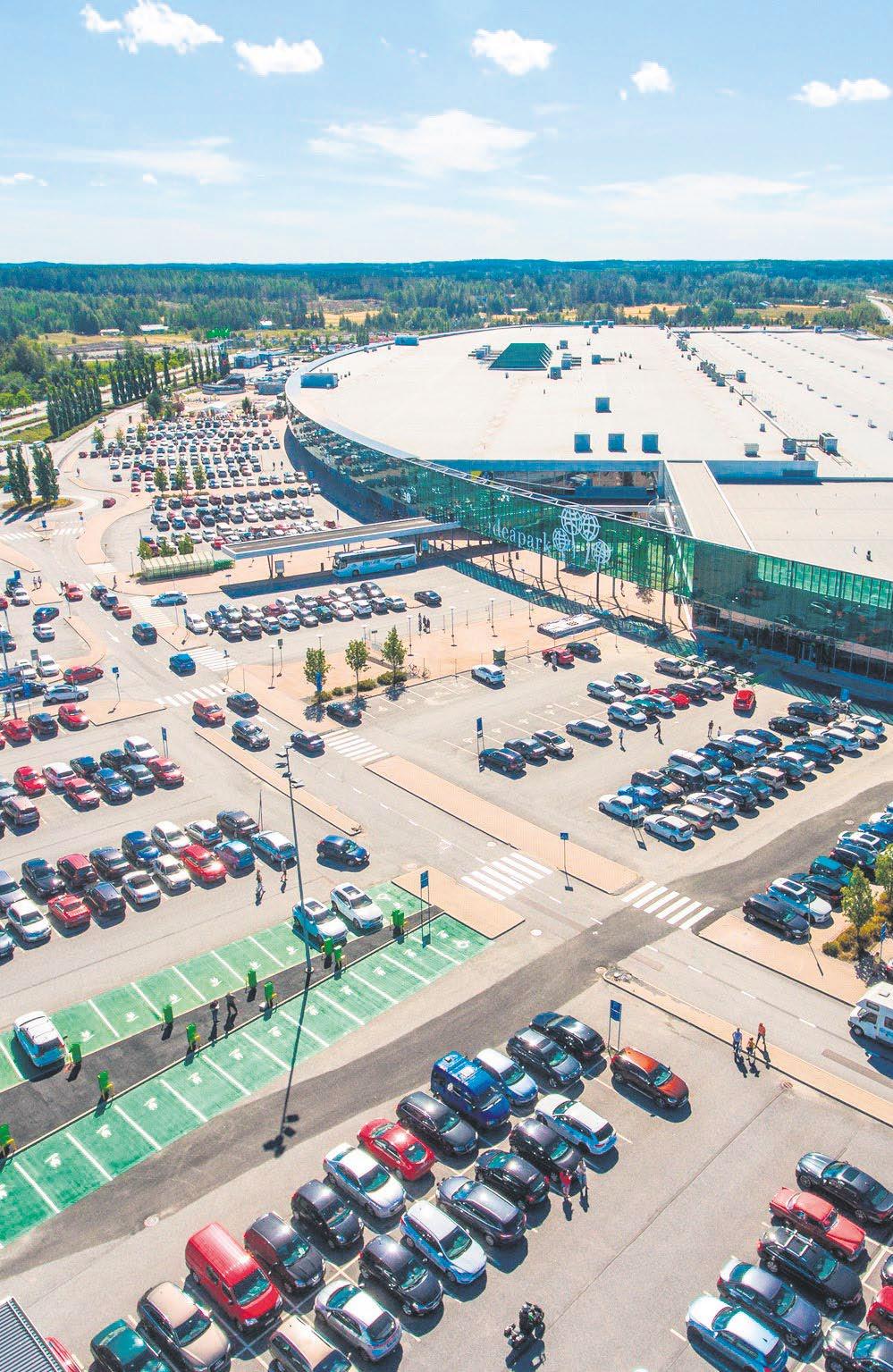




Tampere Times
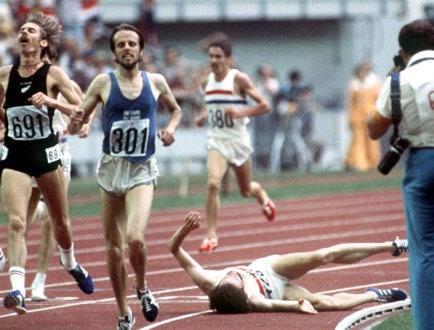
Magazine for Visitors
Issue 2/2022
Autumn-Winter-Spring

www.tamperetimes.fi
ISSN 2343-3817 (print)
ISSN 2669-8293 (online)
Published by Mobile-Kustannus Oy Brahenkatu 14 D 94
FI-20100 Turku, Finland
Editor in chief Roope Lipasti

Publisher Teemu Jaakonkoski
Sales manager Raimo Kurki
raimo.kurki@mobilekustannus.fi
Tel. +358 45 656 7216
Sales Marja Hakomäki
marja.hakomaki@mobilekustannus.fi
Tel. +358 40 529 5678

Graphic design & layout Petteri Mero Mainostoimisto Knok Oy Printed
Cover photos

Ice swimming in Rauhaniemi.
Photo: Laura Vanzo / Visit Tampere
View from Pyynikki.
Photo: Laura Vanzo / Visit Tampere
Sunset from Lapinniemi.
Photo: Laura Vanzo / Visit Tampere Nokia Arena.
Photo: Marko Kallio / Visit Tampere Magdalena Hai. Photo: Juha Törmälä







Over 100 shops and the best brands in Tampere!


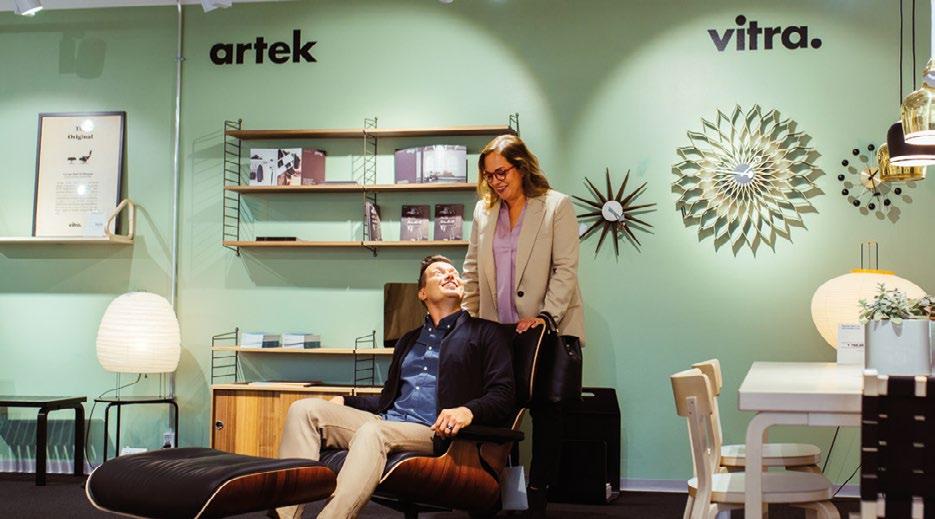
Food, fashion, beauty, home decor & much more!














 Vuolteenkatu 1, TAMPERE Next to the Tampere Bus Station – 5 minutes from the Tampere Railway Station ratina.fi kauppakeskusratina kauppakeskus_ratina
Vuolteenkatu 1, TAMPERE Next to the Tampere Bus Station – 5 minutes from the Tampere Railway Station ratina.fi kauppakeskusratina kauppakeskus_ratina

By reputation, Tampere is a rugged beauty between two lakes. Here the heritage of an old industrial city intertwines with the new, energetic trends of a modern university city, and the nobility of a cultural city with the charms of a city with a young population.
For tourists Tampere offers plenty to see and experience: our latest addition is a new, state-of-the art Uros Live Arena for sports, music and events right in the city centre, easily accessible by train from all over Finland.
So where would I take a visitor in Tampere? We would start by walking along the banks of the Tammerkoski rapids, admiring the flowing water and the red-brick buildings on its edge. The city was founded in 1779 on the banks of the Tammerkoski rapids as a city that granted free trade rights to craftsmen, merchants, and entrepreneurs. In the 19th century, the small village grew into the largest industrial city in the Nordic countries, a city of cotton and linen weavers, shoemakers, and machine builders.
Only one of the factories remain in its original use, namely the TAKO paper mill on the banks below the rapids. Other factory buildings boast activities typical of the 21st century Tampere: culture, cafés, movie theatres, museums, galleries, and companies in the media and creative sectors.
From the “old city” of Tammerkoski, I would take my visitor to the bustle of Hämeenkatu Street and its surroundings to enjoy a selection of department stores and boutiques. We would also visit the university campus and Tampere Hall, home to Tampere Philharmonic Orchestra the world’s first Moomin museum.
Today, Tampere is a busy city of trade, culture, and education that has a population of over 240,000. According to a recent study Tampere is the most attractive city to move to, so we expect to figure to grow! While the universities and other educational institutions bring students and young people to our city, also the diverse business sector attracts employees to the region. While we have a large number of companies operating in the ICT, health and wellbeing, and creative sectors, some manufacturing industry operators remain, for example mechanical engineering companies.
A good tour includes a peaceful break, so next I would probably take my visitors to the Tampere Cathedral to enjoy the atmosphere and admire the frescoes of Hugo Simberg. The tour would continue
to the Saturday market in Tammela for coffee or black sausages, a local delicacy.
From the market we would hop on our new tram, and travel towards the slopes of Pyynikki and Pispala to enjoy a walk and see what the world’s highest gravel esker looks like, and to admire the beauty of Lakes Näsijärvi and Pyhäjärvi. The alleys of Pispala also show a different side of Tampere, with its old cottages and the unique and lively community of the locals.
After strolling around the city, I would take my visitor to one of our excellent theatres or to enjoy some art at Sara Hildén Art Museum. If the weather allows, we could also stop by the Särkänniemi Amusement Park. In the event that my visitor is a sports fan, we would go to a football match or to an ice hockey match in the new Nokia Arena.
In any case, our tour would end with an excellent meal in one of the city centre’s many fine restaurants. And after that, we could continue to a club to enjoy good music and the beautiful sunset over the rapids and the lakes of Tampere.
Ikonen Anna-Kaisa
mAyor of tAmpere
Anna-Kaisa
mAyor of tAmpere




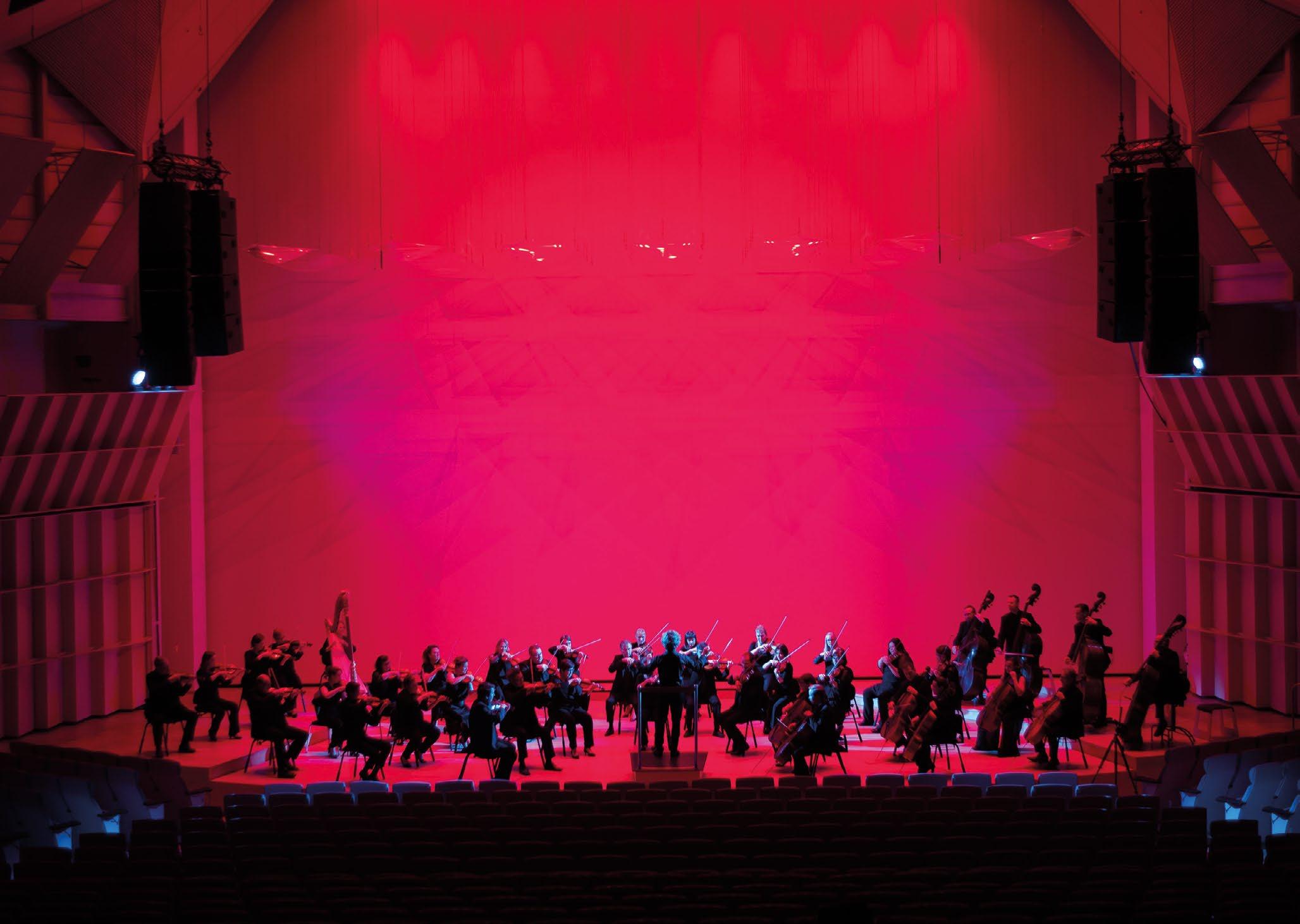

Tony Soprano is frustrated. He complains to his psychiatrist that men like Gary Cooper (or actually, Cooper's character in the film High Noon) don't exist anymore. In his opinion, Cooper was the perfect man: a strong, silent type who got things done and never complained.
The most famous gangster in TV history could just as well be talking about the past giants of Finnish sport. Running legend Paavo Nurmi was the most silent of the silent, the strongest of the strong. The image of a man who tirelessly runs around the track with a stopwatch in his hand, smashing one record after another, has gone down in history. He never complains; he always does what a man has to do. When Nurmi thought the fee offered by a race organizer was unacceptably low, he didn’t bother arguing. Instead, he stopped his 10,000-meter run 2,000 meters before the finish line,

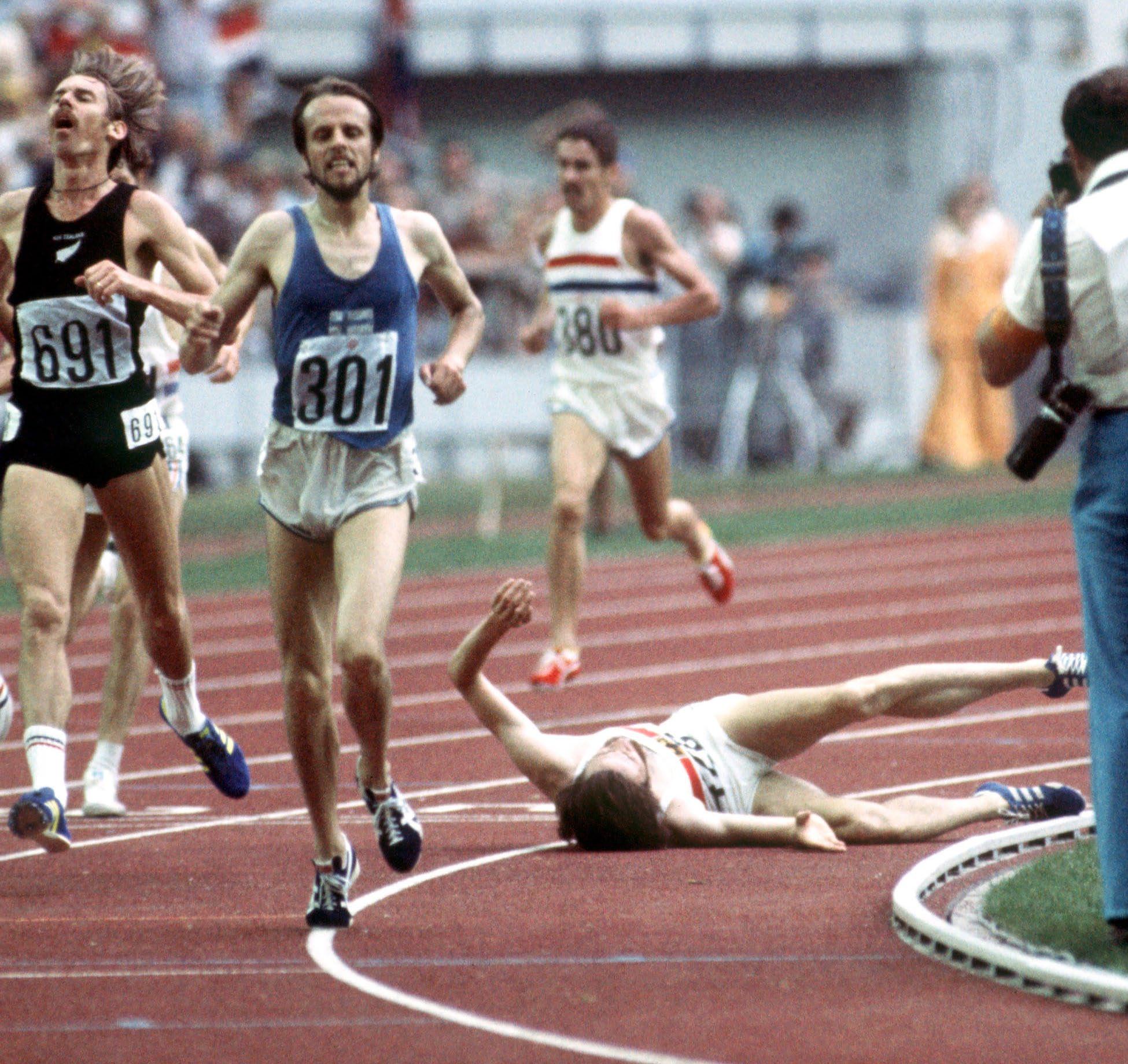
running exactly the distance he thought the fee was worth. When Nurmi was prevented from competing in the Los Angeles Olympics in 1932 due to accusations of professionalism, he remained silent for decades about how much the decision – and the loss of a tenth Olympic gold – had wounded him. He kept quiet and grew bitter.
“He faced down the Miller Gang when none of those assholes in town would lift a finger to help him!” Tony Soprano exclaims in praise of the solitary sheriff of High Noon. The “High Noon” moment of Finnish sport was the men’s 5,000-meter final in the 1976 Olympics in Montreal. Lasse Viren, chasing his fourth Olympic gold, started the last lap in the lead, but in a seemingly hopeless situation: “He can’t win – no, that would be completely impossible. Dixon and Quax could run 800 meters five seconds faster than Lasse,” writes journalist Matti Hannus later in his Montréal Olympics book. As they open onto the final straight, “they loom behind Lasse like a tidal wave,” and Dick Quax pulls up next to Viren. As Quax appears to pass, Viren briefly turns his head toward his rival and smiles. In that moment, the duel is over. Quax is left behind and Viren runs on to victory. “Fifty meters before the finish line, I saw out of the corner of my eye how they were grimacing and looked like they were suffering, and that’s when I realized I would win,” Viren said after the race.
In August 2022, Viren was a guest of honor at the European Athletics Championships in Munich, where he had won his first two Olympic golds 50 years earlier. “Why bother reminiscing about that anymore,” he says, turning down media interview requests. Tony Soprano nods his approval.
With his laconic comment, Viren takes Finnish sports heroism from High Noon to Shane. At the end of Shane, the main character rides off into the mountains, toward the setting sun, after having rescued a farming family from the clutches of a gang of thugs. Shane’s stooped figure (whether mortally wounded or merely battle-weary, we will never know) continues to ride away, even as the family’s admiring little boy shouts after him, like reporters pleading with Viren, “Shane, come back!”
THe liVes of strong and quiet men aren’t always an uninterrupted string of wins. Unrequited love leads John Wayne’s hero to destruction in The Man Who Shot Liberty Valance and Dean Martin’s gunslinger to alcoholism in Rio Bravo. In Finnish sport, ski jumper Matti Nykänen and skier Mika Myllylä play the same kind of “knight of the sad countenance” role. Their destructive lover was the Finnish public, and their downward spirals were accelerated by the shame brought by Myllylä's doping scandal and by Nykänen's many life management problems.
Taking on the role of John Wayne or Gary Cooper is a heavy burden precisely because it is a role, a role you have to constantly embody, and which is nearly impossible to get rid of. Javelin thrower Seppo Räty – the 1987 world champion and a six-time medalist in major competitions – was an extremely uncompromising and conscientious athlete. But when the media asked about his his training methods leading up to the World Championships, his answer matched his manly role: “Drinking beer and playing cards.”
In the words of the newspaperman who discovered the real killer of Liberty Valance and kept it to himself: “When the legend becomes fact, print the legend.”


WHile tHe erA of men like Gary Cooper is over, it seems that Tony Soprano isn’t the only one who misses them. This year, the Finnish women’s national ice hockey team gave a terrible performance at the World Championships, finishing sixth, the team’s worst ranking of all time. Scapegoats were made of the team’s star player, Susanna Tapani, who missed one of the preliminary-round games to attend a friend’s wedding, and the coach, Juuso Toivola, who gave her permission to go. Although Tapani’s decision was unusual for a top athlete, and nothing hurts team spirit more than giving special treatment to certain players, instead of criticizing team operating models, commenters mostly demanded a return to old-school attitude: You do your job! And you don’t complain!
The same kind of criticism was heard a few years ago, when a snowboarder selected for the Olympics stated that winning a medal would be nice, but the most important thing was taking part in the international community of snowboarders touring the Games. Those who were shocked by the comment wanted the athlete’s selection revoked because in their opinion, this hippie had clearly not internalized the most ancient wisdom of sport: “Winning isn’t everything, it’s the only thing!”
The collision of the old world and the new is also a frequently recurring theme in Westerns. The men of the past world are destroyed because they lack the desire or the ability to adapt. The conversation between Harmonica and Frank in Once Upon a Time in the West sums it up: Harmonica: “So, you found out you’re not a businessman after all.” Frank: “Just a man.”
As the men prepare to duel, Ennio Morricone’s music playing in the background, modern society approaches in the form of a railroad. In Finland, this collision was seen after the 2011 Ice Hockey World Championships. The young players celebrating their championship gave measured and analytical statements to the media, while at the same time, a member of the coaching staff collapsed, utterly drunk, in front of media cameras, and another was sent back to the hotel to sober up.
Tony SoprAno still sits in a cafe. Suddenly, he’s gone, and the TV screen is filled with snowy white noise. s
The Sopranos (1999–2007), HBO Original Series
Matti Hannus: Montreal: Olympiakirja (1976)
John Ford: The Man Who Shot Liberty Valance (1962)
Howard Hawks: Rio Bravo (1959)
Sergio Leone: Once Upon a Time in the West (1968)
George Stevens: Shane (1953)
Fred Zinnemann: High Noon (1952)
Shane's stooped figure continues to ride away, even as the family's admiring little boy shouts after him, like reporters pleading with Viren, “Shane, come back!”
8000 BC
The connection to ocean from the Tampere region was cut when the ice age was finally over. As the ice melted, the land rose up and the lakes were born – also Näsijärvi and Pyhäjärvi, and little later the Tampere Rapids. A must see attraction from the ice age is Pyynikki, a 90 hectare ridge area, which is almost in the centre of the city. From here there are marvellous views to lake Pyhäjärvi. It is also a beautiful place for other outdoor activities.
600
Tampere was an ideal place to build a village, because there were good waterways to both north and south. The first signs of permanent living in the area are from the 7th century.
1200
By the 13th century Tampere region had grown, and it was an important market place. It was inhabited by the Pirkka tribe and even today the Tampere province is called Pirkanmaa, “The land of the Pirkka”.
1638
Tampere was not yet an actual city, but in 1638 Finland’s governor Per Brahe ordered two yearly fairs to be held at the the Tampere Rapids. That’s why Turku – the then capital of Finland – and Tampere have got a special connections of fates, for when the whole city of Turku burned in 1827, the damage was so severe partly because all the men from Turku happened to be at the Tampere fair.
1779
The King Gustav III of Sweden finally granted Tampere the full township status. And no wonder, because Tampere was huge: 3.2 square kilometres with population of no less than 200!
1824
The beautiful old church of Tampere was built. The architect was Charles Bassi
1820
A Scotsman called James Finlayson set up a cotton factory near the Tampere Rapids. It was the first but not last major factory in the remarkable industrial history of Tampere. Finlayson still is a brand every Finn knows. Also from that time on, the use of waterpower from Tampere Rapids became important.
1840
From the 1840’s Tampere became the most industrialised city in Finland. Soon there were factories that made iron, paper, machinery, clothes, shoes and many other things. Even to this day Tampere is sometimes called “Manse”, which comes from the saying that Tampere is the Manchester of Finland.
1901
Tampere is also a vibrant theatre city. The first one, Tampereen Työväen Teatteri – The Tampere Workers Theatre – was established 1901. In 2020 there are over 10 professional theatres in the area.
1918
In 1918 Finland was torn by a civil war with two sides: the “reds” and the “whites”. As a working class city, Tampere sided with the reds (who lost). Tampere saw severe battles, thousands died in war efforts and even more in prison camps.
1939–1945
Finland was in war against Russia, and Tampere was an important centre of war industry. For example Tampella made mortars and cannons. Tampere was also bombed, but luckily there was little damage.
1971
Näsinneula, the high tower that Tampere is famous for, was built. Few years later The Särkänniemi Amusement Park opened its doors.
During the 90’s the heavy industry of Tampere was in trouble. One reason was the collapse of Soviet Union, but all and all the world was changing. The chimneys were no longer active, and the factories shut down. Nowadays they are renovated for apartments, museums and such. Industry in today’s Tampere in mostly high tech.
Tampere is the third biggest city in Finland, with over 240,000 inhabitants in the city region. It has four universities and a very vivid cultural life. Tampere is also a city of vision and courage: the brand new tramway is a good example of that! s


Rauhaniemi folk spa offers its visitors the most atmospheric sauna experience and stunning views across the lake Näsijärvi. Rauhaniemi is a popular tourist spot offering traditional Finnish experiences to people from all over the world. The saunas are open every day of the year and in the winter you can go ice swimming.

For more information go to www.rauhaniemi.net
Opened in 1901 and located in a gorgeous art nouveau building, Tampere Market Hall has everything you need to experience the city as a local. Enjoy lunch in one of the various restaurants, shop local treats or sit down for a coffee or a glass of wine, and just breathe in the atmosphere.
With so much going on, it’s incredible how peaceful and unwinding a visit to this place feels like. The Old Market Hall is truly the heart of the city and you can see it in its daily customers: here families, students, foodies and decade-long regular customers walk hand in hand.

Come and experience Tampere in its most original form. We’re here for you six days a week.
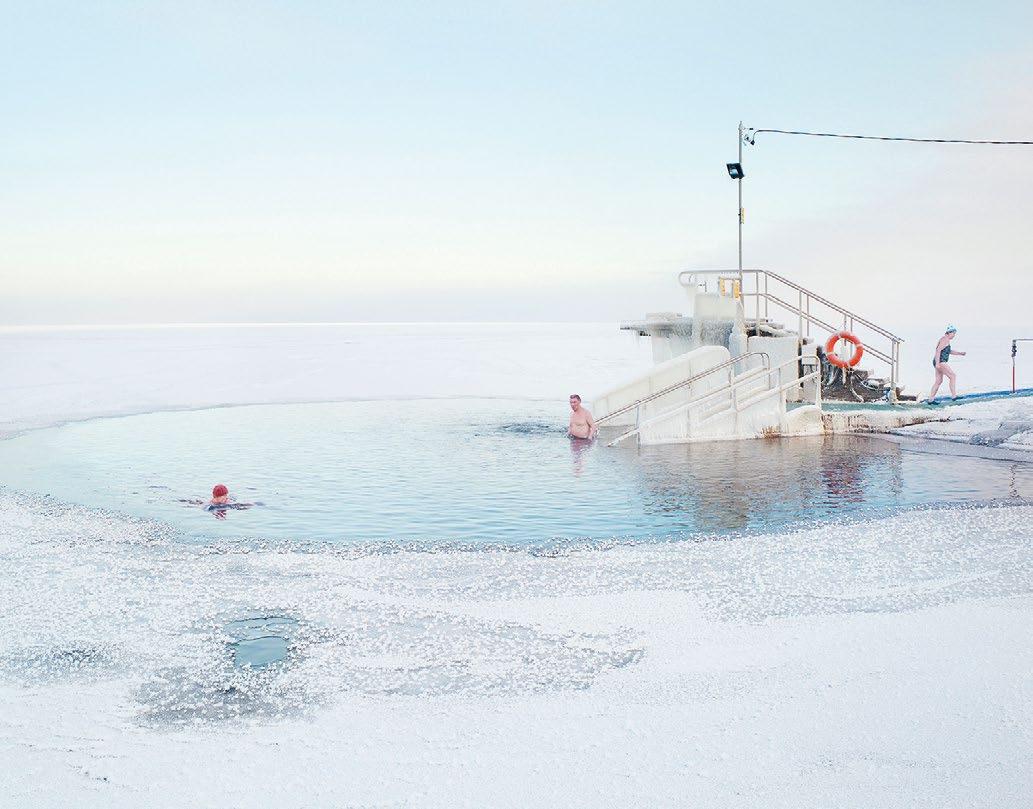
Suomen ensimmäisessä kissakahvilassa sinua odottaa
lauma rapsutustasi odottavia kissoja, herkullista suuhun pantavaa sekä ihana, kehräävä tunnelma.
Tervetuloa meille herkutteluhetkelle tai viettämään kokonaisen yön kissojen seuraan!
Cat cafe Purnauskis is the Finland's first cat cafe. We have adorrable fluffy cats, delicious food and sweets and you can also spend a night withs our purring friends Wellcome to the Kingdom of Cats!
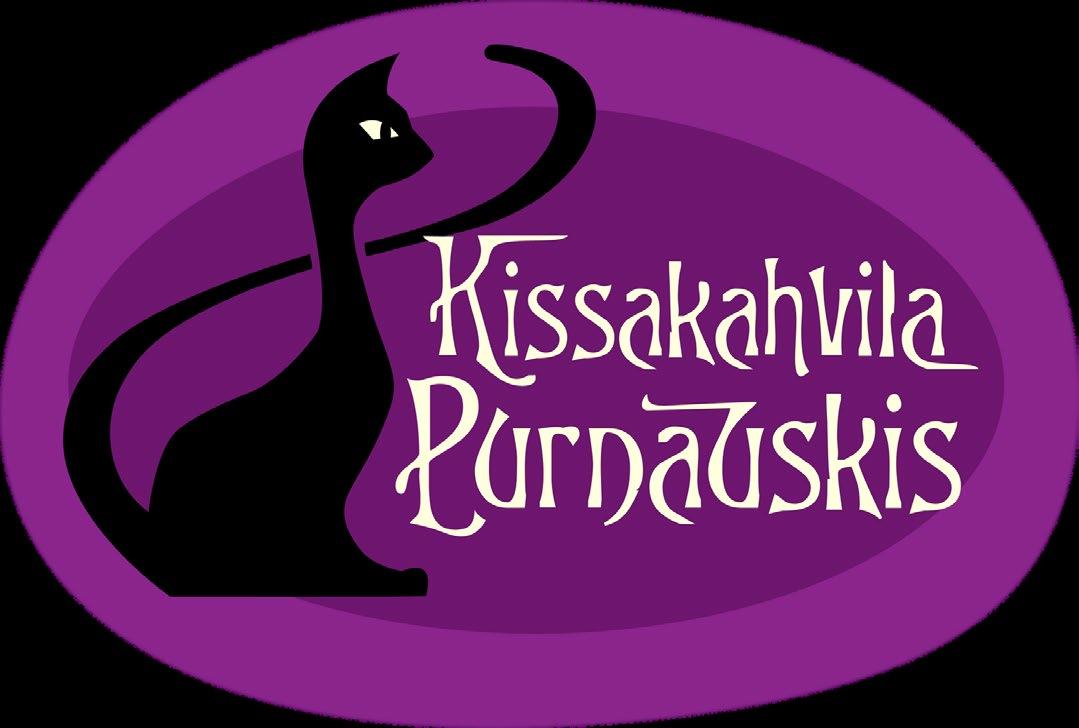
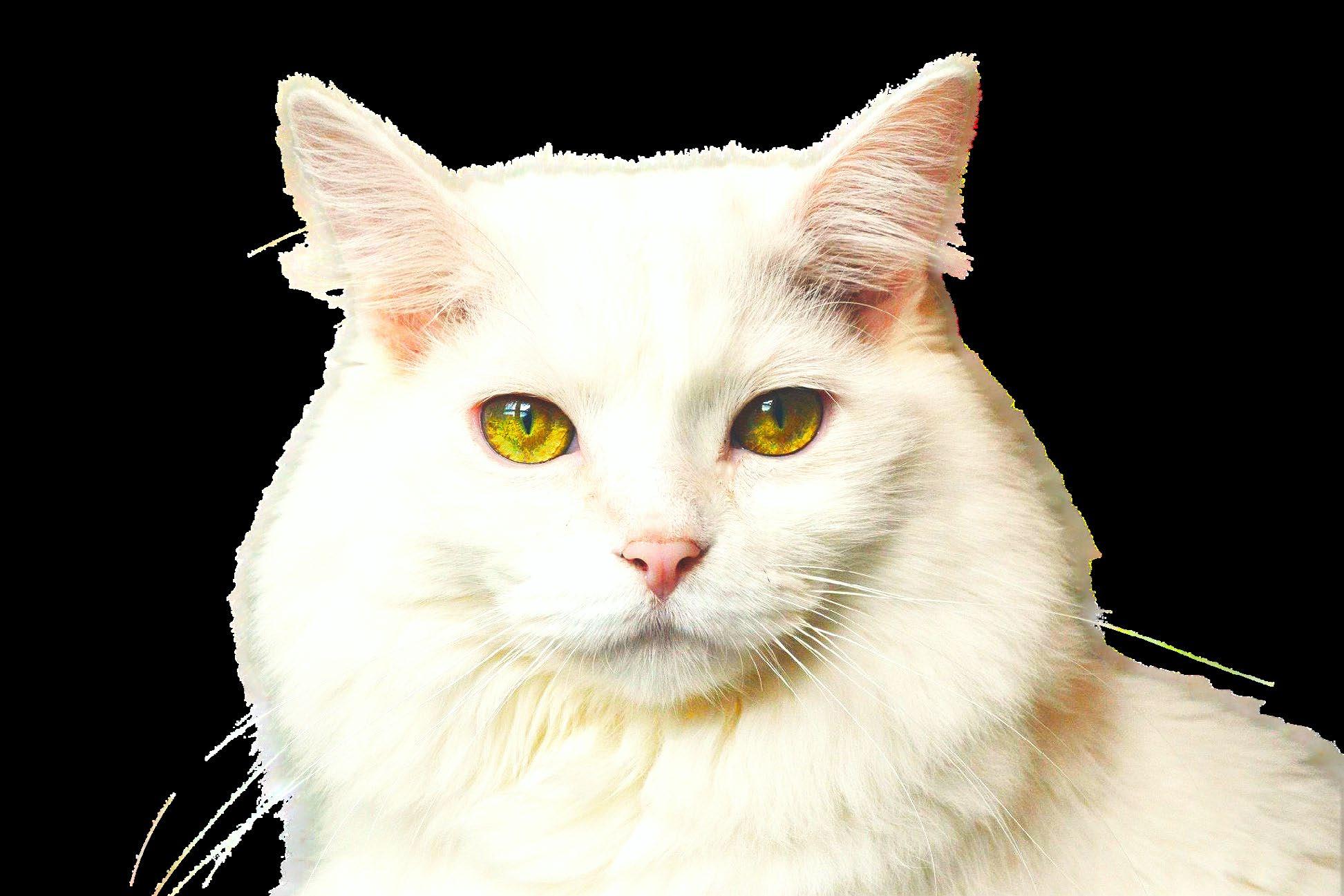

www.purnauskis.fi


www.nightwithcats.com
Aaltosenkatu 31-33
TAMPERE

Muista myös kissakahvilat Helsingissä ja Kuopiossa!
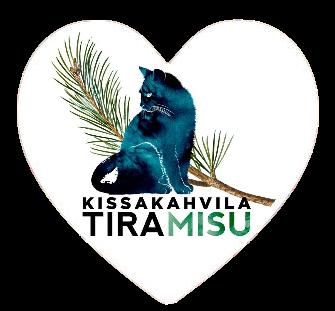







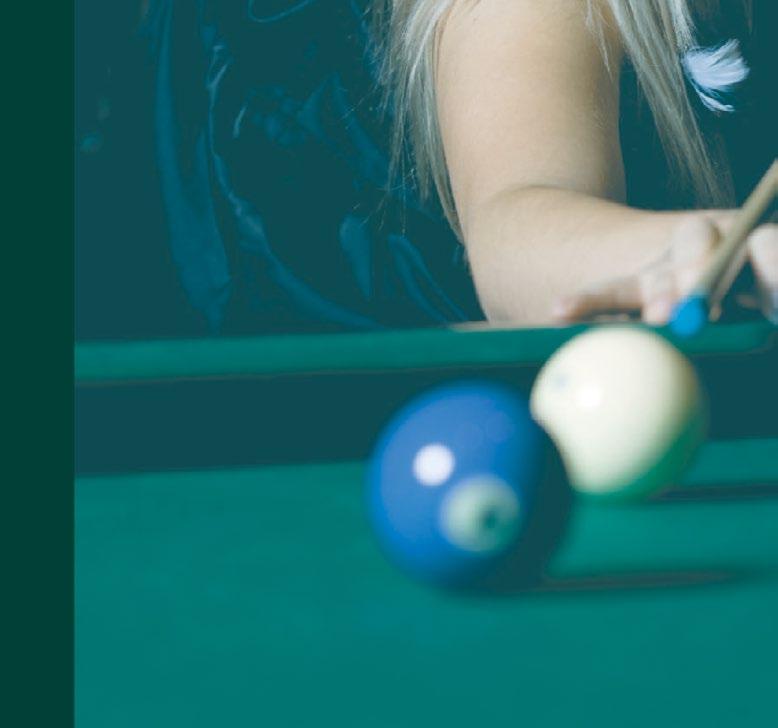

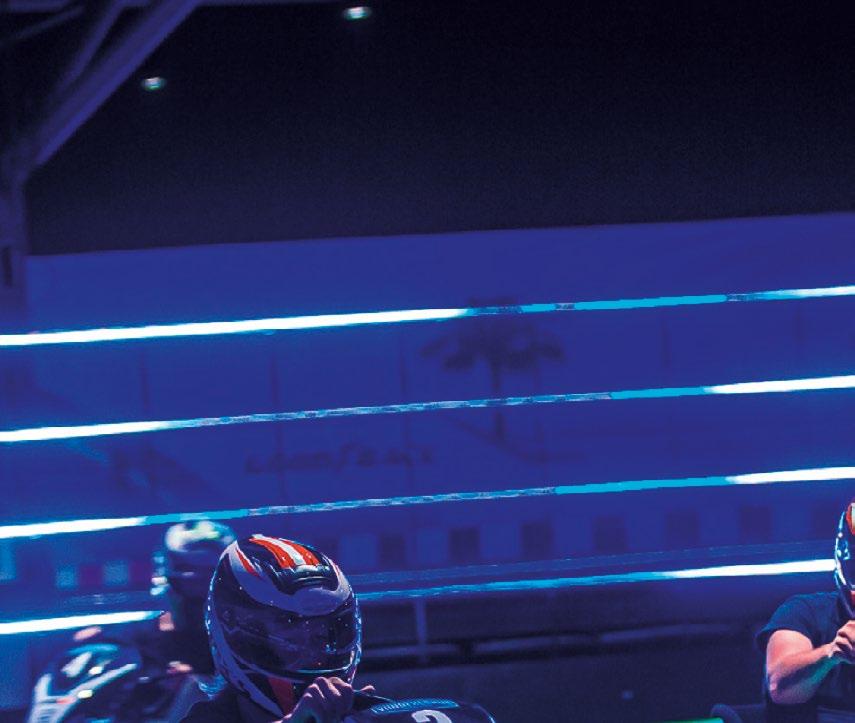


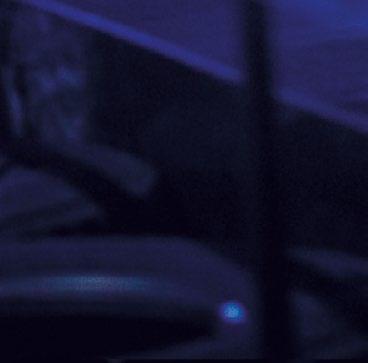






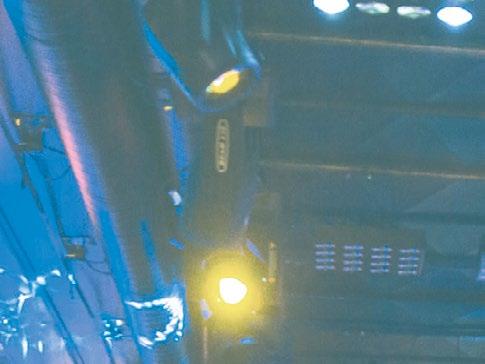








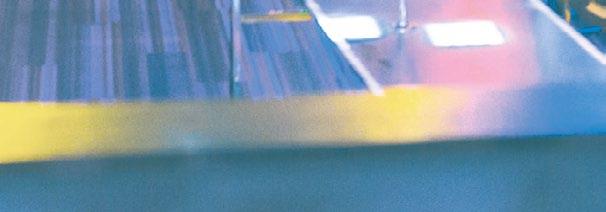



It wAs tHe usual story: Joel Willans was sitting in a bar in London when a blonde Finnish woman tapped him on the shoulder and asked him to buy her a drink. Then they got married.

Actually, it isn’t a very typical story, but that’s how it happened anyway. For the first five years, the couple lived in London, both of them working in advertising. Eventually, they felt they had at least gotten a glimpse of all there was to see around there, so they set off to travel the world for a year.
“When we eventually landed back at Heathrow and everything was foggy, rainy, and dreary, I suggested we go to Finland after all,” Willans says. “That summer happened to be especially warm and sunny, so I wanted to stay here longer, though my wife of course reminded me that autumn and winter were on the way.”
The couple still had time to live in Peru for a little while before having children, which cemented their future in Finland. Around that time, Willans made a bet with himself. He would create a Facebook page that talked about Finland through the eyes of a foreigner and gain 10,000 followers.
And he did it. The satire page Very Finnish Problems now has more than a million followers – not on Facebook alone, but still.
“More than half of my followers are Finnish,” Willans explains. “The next biggest group is from the United States, followed by Sweden, Great Britain, and Germany. Finns probably find it interesting to see their country from an outsider’s perspective. On the other hand, in the United States, there are a lot of descendants of Finns who moved there long ago and have never even been to Finland, let alone speak the language, and have some sort of romantic idea about Finnishness. Very Finnish Problems is a chance for them to get a glimpse at things over here. It’s probably the same with the Swedes – there’s also a large Finnish minority there.”
He’s been at it for more than five years now, so there seems to be no shortage of odd things about Finland.
“There are the basic strange things like the weather, language, food, and customs. The prime minister, Sanna Marin, has also been fantastic material – she has a certain kind of social media stardust. When the video came out during the summer of her dancing with her friends at the prime minister’s official residence in Kesäranta, I wrote about it for The Sunday Times and shared the video on Twitter. It was viewed over five million times. That post blew up and Marin received support from all over the world.”
Very Finnish Problems is humor and, above all, satire. The idea is to highlight all kinds of strange things a foreigner might come across in Finland. Willans has also written two books on the subject; the subtitle of the first is descriptive: “The Foreigner’s Guide to Surviving in Finland.”
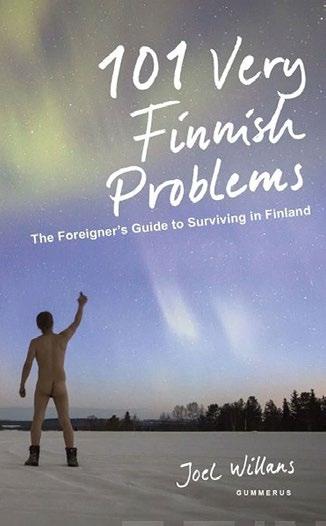

So what kinds of strange things are we talking about?
“When I first came to Finland, the sauna, for example, was a shock. I wasn’t at all prepared for being naked with the whole family. I myself come from a very liberal family, but that sort of thing would not have been heard of in Britain. I remember when my mother, who is a very open-minded woman, went to a swimming pool (and sauna) in Helsinki. She was stunned because she had never seen so many naked people before.”
But since getting over his culture shock, Willans has warmed up to the sauna. And more than that: “Saunas would be great to export to the world precisely because in saunas you see different kinds of
bodies and realize that few of them look like what the magazines have on offer. It’s healthy.”
Another thing to marvel at was the winter.
“The cold is so different here than in England. It gets into your bones and your core. On the other hand, it’s fascinating to go outside at 25 degrees below zero, when your eyelashes frost and your beard starts to crunch – and this goes on for three months! On the rare cases in Britain when you saw snow in the morning, it meant you wouldn’t have to go to school, or anywhere else, for that matter, for several days, because the whole country stopped.”
Of course, there are many other strange things in Finland besides sauna. For example, things like salted licorice or ice-hole swimming, both of which can be difficult for a foreigner to comprehend. Or mämmi, an Easter dish made of rye that looks as though it was fished out of a toilet bowl. Many people think it tastes like that too.
“No, I haven’t gotten used to mämmi. My wife’s family always makes it for me at Easter, even though they know very well that I don’t eat it. Another thing that makes no sense is the autumn ritual of eating crayfish: so much trouble and so little to eat. So my integration hasn’t been perfect. I’m also ashamed of how badly I speak Finnish.”
Though Finns deserve part of the blame for that.
“They speak such good English that whenever I try to speak Finnish, they immediately switch to English. At some point I had the idea that the children would help. That somehow, I would learn the language through them, but they’re actually my worst critics and say right away, ‘Dad, don’t speak Finnish. It’s so embarrassing!’”
Having lived in Finland for twenty years now, there are of course some things a citizen of two cultures misses from his old home country.
“The bath is one example. And now, when I look at things from a bit of a distance, I’ve noticed how lovely British small towns are. My childhood village of Sudbury in southeast England is 1,300 years old. We lived in a 200-year-old house, for example, and my school was from the 18th century. They’re things I used to take for granted.”
Another is football, of course.
“I’ve been a supporter of Ipswich Town since I was seven years old, but I wasn’t able to see their matches on TV for many years –nowadays, of course, it is possible – so it was great to be able to go to a match for the first time in years last summer. Another thing I miss is sausage rolls. Whenever I go to England, I run to a bakery first thing to buy them.” s
FACEBOOK, INSTAGRAM & TWITTER: Very Finnish Problems
VERY FINNISH PROBLEMS IS HUMOR AND, ABOVE ALL, SATIRE. THE IDEA IS TO HIGHLIGHT ALL KINDS OF STRANGE THINGS A FOREIGNER MIGHT COME ACROSS IN FINLAND.
YOU ARE HERE!
Hotels providing Tampere Times are marked on the map with numbered blue dots. The list of hotels can be found on page 20.

ADVERTISERS ARE MARKED ON THE MAP WITH GREEN DOTS.
PLEASE LEAVE THIS MAGAZINE FOR THE NEXT GUEST – THANK YOU!
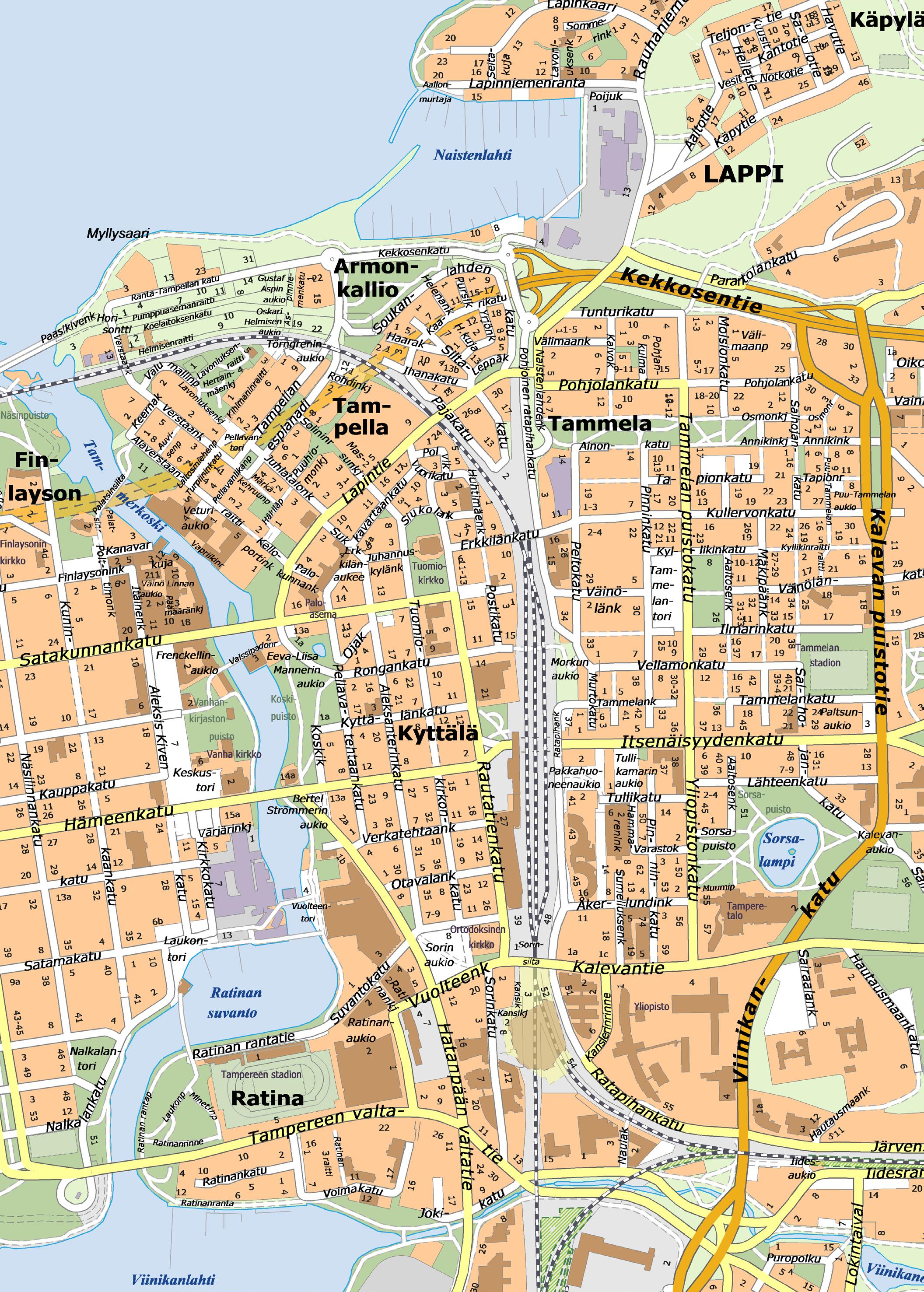
01 courtyArd by mArriott tAmpere city Hotel

Yliopistonkatu 57, 33100 Tampere
Tel. +358 29 357 5700 www.marriott.com
02 dreAm Hostel tAmpere
Åkerlundinkatu 2, 33100 Tampere
Tel. +358 45 236 0517 www.dreamhostel.fi
03 forenom ApArtHotel tAmpere city
Hämeenkatu 28, 33200 Tampere
Tel. +358 20 198 3420 www.forenom.fi
04 forenom tAmpere city suites
Puutarhakatu 37 A, 33230 Tampere
Tel. +358 20 198 3420 www.forenom.fi
05 HolidAy inn tAmpere centrAl stAtion
Rautatienkatu 21, 33100 Tampere
Tel. +358 3 2392 2000 www.ihg.com
06 Hotel HomelAnd
Kullervonkatu 19, 33500 Tampere Tel. +358 3 3126 0200 www.homeland.fi
07 Hotel kAuppi
Kalevan puistotie 2, 33500 Tampere Tel. +358 3 253 5353 www.hotelli-kauppi.fi
08 lAplAnd Hotel tAmpere Yliopistonkatu 44, 33100 Tampere Tel. + 358 3 383 0000 www.laplandhotels.com
09 originAl sokos Hotel ilVes
Hatanpään valtatie 1, 33100 Tampere Tel. +358 20 123 4631 www.sokoshotels.fi
10 rAdisson blu grAnd Hotel tAmmer
Satakunnankatu 13, 33100 Tampere
Tel. +358 20 123 4632 www.radissonblu.com
11 scAndic eden nokiA
Paratiisikatu 2, 37120 Nokia
Tel. +358 3 4108 1627 www.scandichotels.fi
12 scAndic rosendAHl
Pyynikintie 13, 33230 Tampere
Tel +358 3 244 1111
www.scandichotels.fi
13 scAndic tAmpere city
Hämeenkatu 1, 33100 Tampere
Tel. + 358 3 244 6111
www.scandichotels.fi
14 scAndic tAmpere Hämeenpuisto
Hämeenpuisto 47, 33200 Tampere
Tel. +358 3 4108 1628
www.scandichotels.fi
15 scAndic tAmpere koskipuisto
Koskikatu 5, 33100 Tampere
Tel. +358 3 4108 1626
www.scandichotels.fi
16 scAndic tAmpere stAtion
Ratapihankatu 37, 33100 Tampere
Tel +358 3 339 8000
www.scandichotels.fi
17 spA Hotel HolidAy club tAmpereen kylpylä
Lapinniemenranta 12, 33180 Tampere
Tel. +358 30 687 0000
www.holidayclub.fi







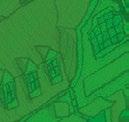
















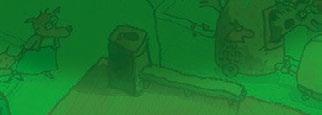





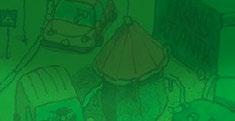


















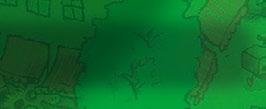






















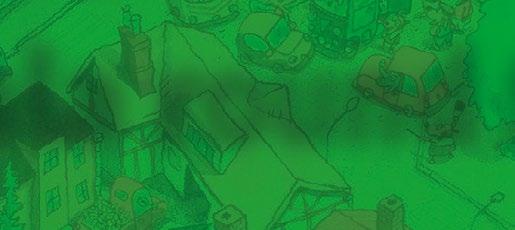













The exhibition is an introduction to Finnish expressive painting from the Golden Age to contemporary art. Expressionists, who have been influential in Europe since the beginning of the 20th century, use their art to express their emotions and inner experiences. In their paintings, wild forms and strong colours are combined with powerful brushstrokes.
The exhibition covers a period of 150 years, from the expressive, patriotic landscapes of the Golden Age and Akseli Gallen-Kallela’s African period to Helene Schjerfbeck’s Modernism that studies inner worlds, Ellen Thesleff’s luminous Expressionism, the art of the November Group of the 1910s and 1920s, the Informalism of the 1960s, the Neo-Expressionism of the 1980s, and to the expressive painting by contemporary artists, in whose works free pictoriality is alive in its various forms.

The national look of art in this country was created during the Golden Age of Finnish art (ca. 1880–1910). Artists depicted the Finnish people, history and nature based on the teachings they had adopted at international art schools. During the early part of the Golden Age, artists favoured a realistic or natural style of painting. Nevertheless, the pictorial and expressive characteristics based on free use of the brush were already visible in the works of some artists. As early as the 1870s, Fanny Churberg’s patriotic landscapes were full of the power of colours and dramatic feel, and she allowed her brush strokes to show in her paintings. Akseli Gallen-Kallela’s expressionist art mainly dates to his African period of 1909–11, but even some of his earlier works already show a desire to shift towards a fast use of the brush and colour effects.
INCREASINGLY STRONG HUES GRADUALLY BECAME PART OF THESLEFF’S COLOUR PALETTE. SHE DEPICTED LANDSCAPES AND HUMAN FIGURES USING MOVING, LIVELY BRUSHSTROKES.



Ellen Thesleff (1869–1954) was a master of depicting harmonious colours, light and movement. In her paintings created in Italy at the beginning of the 20th century, she already used an entirely new painting style. Increasingly stronger hues gradually became part of Thesleff’s colour palette. She depicted landscapes and human figures using moving, lively brushstrokes and a palette knife to create the impression of movement. Thesleff was also one of the first Finnish artists to use abstract expression.
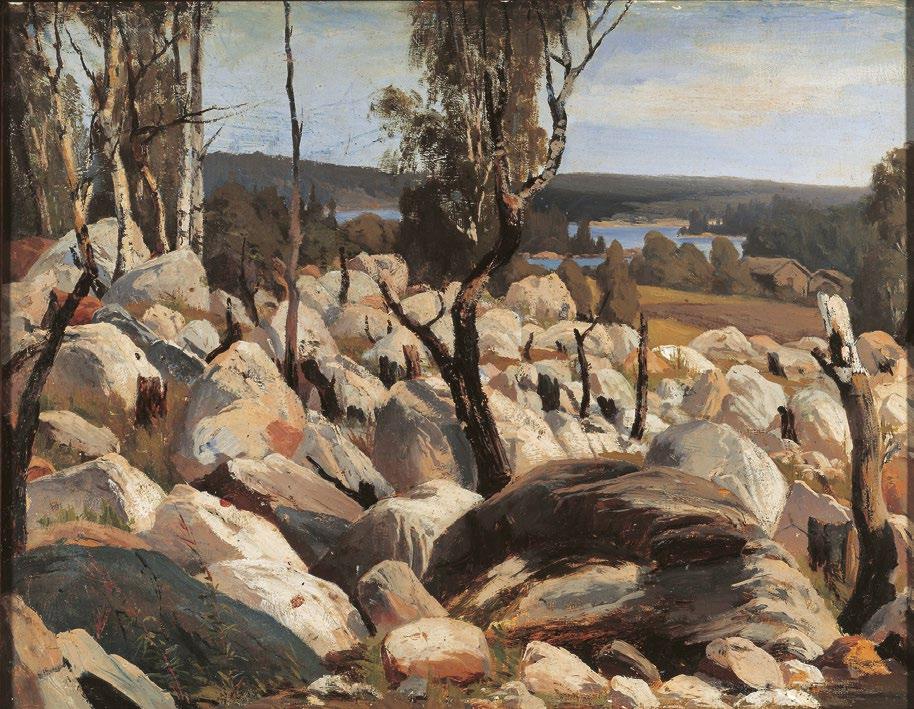
Helene Schjerfbeck (1862–1946) was a pioneer of Finnish modern art and a model for later Finnish expressionists. She started her career with realistic paintings but switched to reduced modern expression and depiction of inner life at the beginning of the 20th century. Her colour palette became ascetic and her shapes flat and simple. These are common characteristics of a painting style called Synthetism. From the 1910s onwards, expressiveness implemented through expressive colours and broad brushstrokes became prominent in Schjerfbeck’s paintings. She also combined different methods of painting. She could paint, wipe and scratch her works with a palette knife and sandpaper many times to create the impression she sought. The amount of colour pigment could vary from thin to fully brushed, and at times the artist intentionally left the surface of the canvas visible.
Fanny Churberg, Burn-Beaten Landscape in Uusimaa, probably 1872. Oil on canvas. Nordea Art Foundation Finland. Henry Wuorila-Stenberg, Painting no 6, 1996–97. Oil on canvas. Pro Artibus Foundation. Ellen Thesleff, Florence, 1907. Oil on wood. Signe and Ane Gyllenberg FoundationThe November Group has been considered the most important group of artists in the history of Finnish art. In recently independent Finland, it became the bellwether of art that depicted Finnish nature and people without embellishment while simultaneously bringing a new modern style into our art. The group held its first exhibition in Helsinki in November 1917. The exhibited artists were fascinated by the new modern and wild expressionist art and favoured a dark and earthy colour palette and a feverishly powerful brush technique. Participants included Tyko Sallinen, Juho Rissanen, Alvar Cawén, Marcus Collin, Juho Mäkelä and Gabriel Engberg. Later other artists joined the group, such as Eero Nelimarkka, Ilmari Aalto, Einar Ilmoni, Anton Lindfors, Mikko Carlstedt and Jalmari Ruokokoski. The artists were also interested in other styles, such as Cubism. The November Group organized altogether five exhibitions and eventually disbanded in 1924.
Informalism is an artistic movement based on free form and abstract expression. In the 1960s, Informalism took over Finnish art. Paintings are dominated by spontaneous brushstrokes, trickling paint, expressiveness, primality, intuitiveness and instinctiveness. Sometimes informalists mixed different materials such as sand, macadam and concrete into their paint.
Space-themed views were the subject of the works of many informalists, such as Mauri Favén and Arvo Summanen . The blazing brushstrokes and earthy colours in Esko Tirronen’s works evoke mental associations with landscapes. Informalists were also interested in studying nature from up close, which was evident in various tissue and cell themes. Other informalist painters included Lauri Ahlgrén, Reino Hietanen, Kimmo Kaivanto, Erkki Heikkilä and Ahti Lavonen
NEO-EXPRESSIONISTS WERE INTERESTED IN THE SUBCONSCIOUS, DREAMS, SEXUALITY, MYTHS AND HISTORY. THEIR PAINTINGS WERE USUALLY COLOURFUL AND EITHER REPRESENTATIONAL OR ABSTRACT.
In the 1980s, a Neo-Expressionist artistic movement was born in West Germany, from where it spread to many other European countries. In Finland, the movement emphasized the passion, emotionality and individuality of painting. Neo-Expressionists were interested in the subconscious, dreams, sexuality, myths and history. Their paintings were usually colourful and either representational or abstract. The size of the works grew and their expression was uninhibited and bold.

Neo-Expressionists of the 1980s included Leena Luostarinen, Marjatta Tapiola, Marika Mäkelä, Jukka Mäkelä, Pentti Meklin and Markku Kolehmainen
The legacy of expressive and pictorial art lives on in contemporary art in a diverse and constantly changing form. What is crucial in the 21st century is the individual self-expression and freedom of artists rather than commitment to restrictive stylistic movements.
Teemu Saukkonen has combined needlepoint works found at flea markets into his expressive paintings from the early 2000s. Henry Wuorila-Stenberg’s paintings exhibit a combination of influences and philosophies from Eastern and Western cultures. Emmi Kallio combines representational fragments from present day and the glamour of the world of the past into her abstract paintings created using brushstrokes, squeezed paint, splatters and glitter. In Viljami Heinonen’s paintings, abstract pictoriality is combined with various story fragments and human figures.
The artisits freely draw and combine elements from different styles of painting – from high culture and popular culture, the history of art and the present day, abstract expression and representational expression. Finnish contemporary painting is multi-voiced and diverse. s

The exhibition consists of works from private art foundations that have rarely been displayed in public, complemented by works from the collections of the Tampere Art Museum. The exhibition has been organized in collaboration with Finnish Fine Arts Foundations.
The Finnish Fine Arts Foundations was founded in November 2006 when six art foundations joined forces for the preservation of cultural heritage and exposure for their collections. The member foundations are Alfred Kordelin Foundation, Fortum Art Foundation, Föreningen Konstsamfundet, Gösta Serlachius Fine Arts Foundation, Lönnström Art Museum, Nordea Art Foundation Finland, OP Art Foundation, Pro Artibus Foundation, Signe and Ane Gyllenberg Foundation, UPM Kymmene Cultural Foundation and Åbo Akademi University Foundation. The collections of the foundations combined include more than 25,000 works of art.
POWER OF THE BRUSH
FROM THE GOLDEN AGE TO CONTEMPORARY ART
8 October 2022–8 January 2023
Tampere Art Museum
Puutarhakatu 34, Tampere tampereentaidemuseo.fi
SEE ON MAP (PAGE 18).
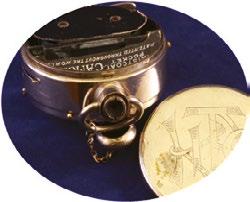
The world’s first spy museum in the city center introduces you to the world of real life James Bonds where a single device can change the world more than governments. World of eavesdropping, hidden cameras and microphones, secret weapons, code breaking, e-mail hacking...


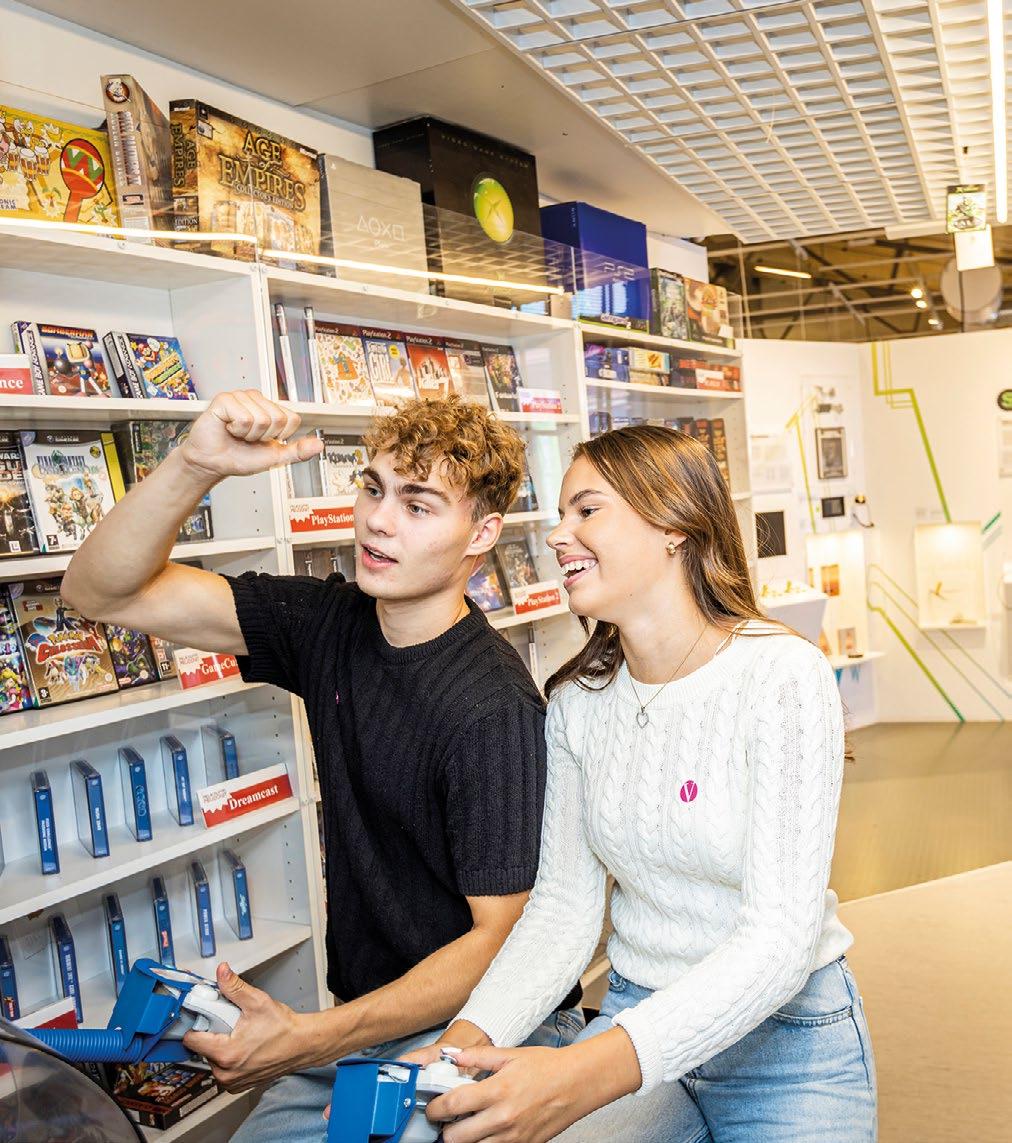
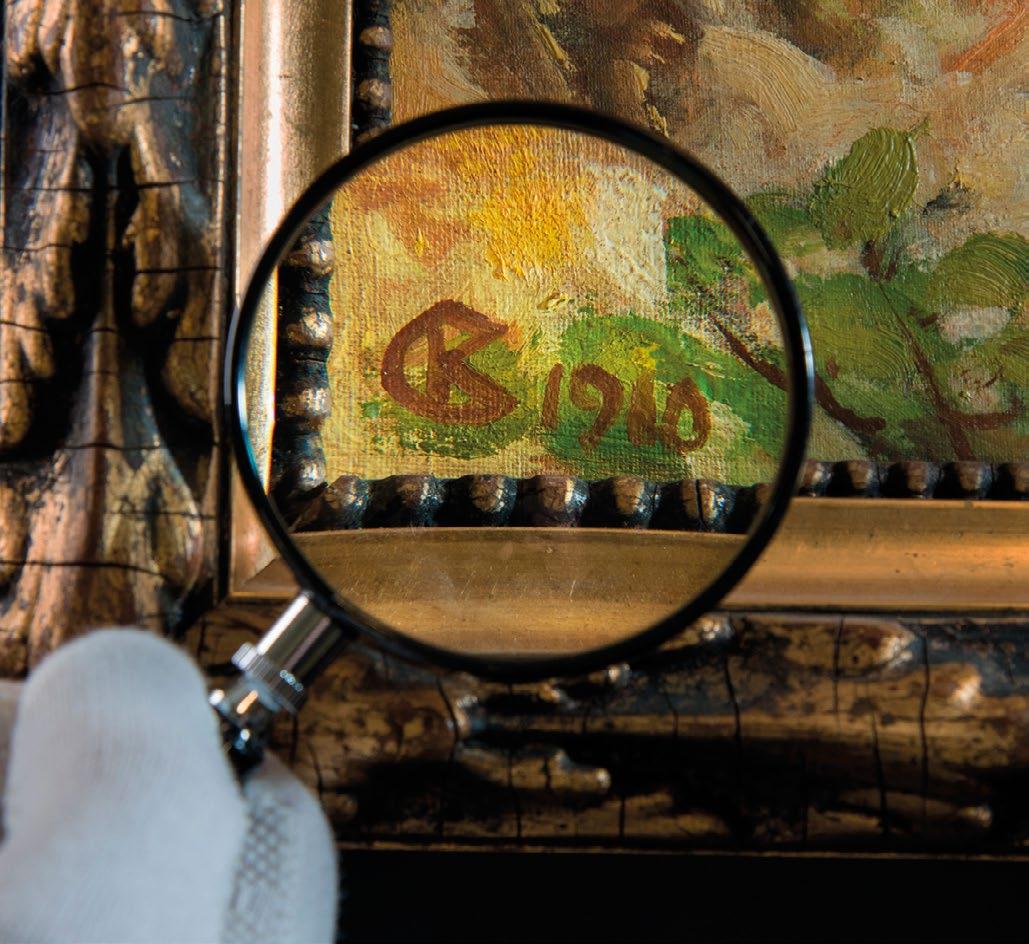
Mariankatu 40, Tampere



Emil Aaltonen museum of industry and art. The permanent collection represents Aaltonen´s life and displays some of his art collection. The exhibited artists are masters of older Finnish painting.










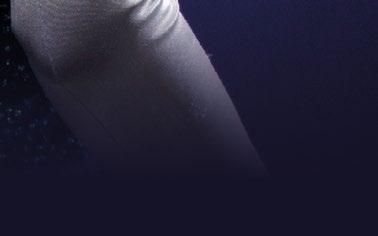

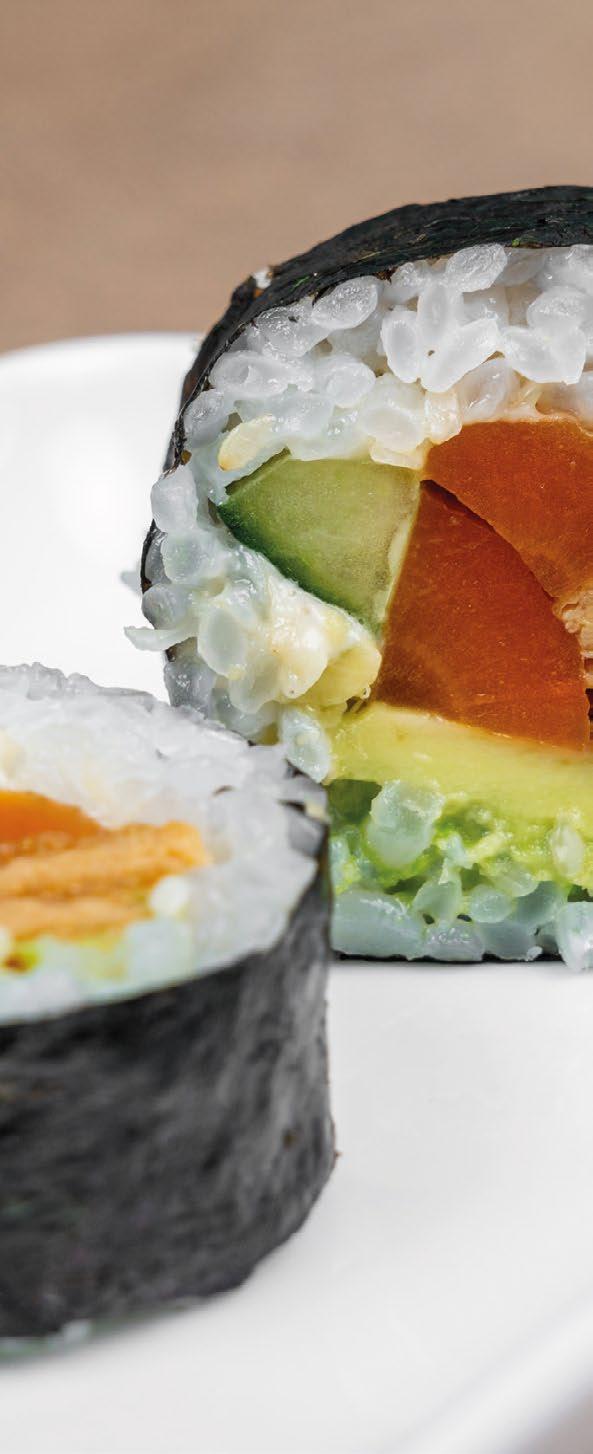








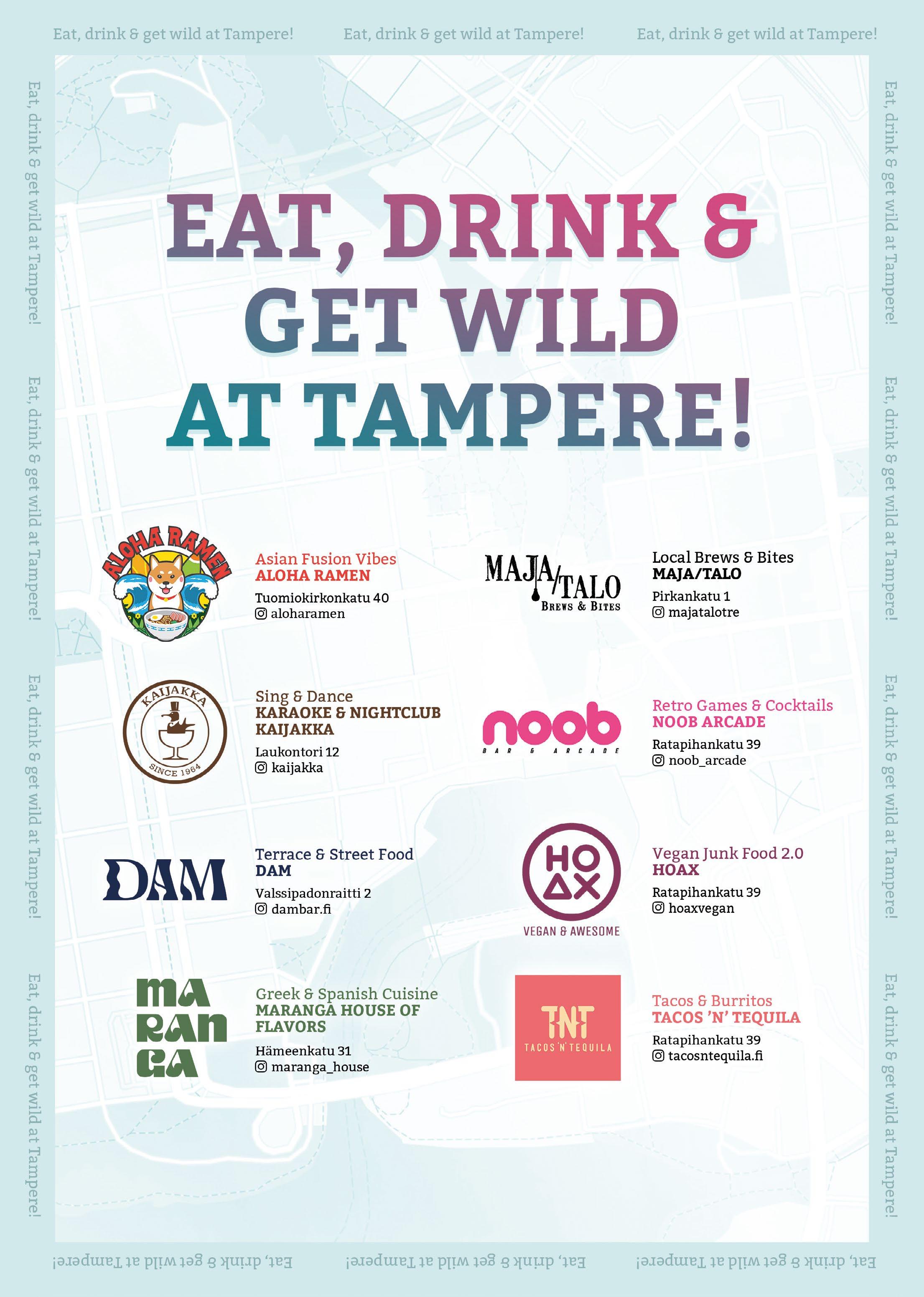
Year after year, Finland is among the top ten most inventive countries in the world based on inventions per capita. In Europe, Finns are usually among the top five in terms of number of patents. Did you know that the following inventions are Finnish?
The Molotov cocktail is a simple explosive device, made from a bottle, that Finns used against tanks, especially during the Winter War of 1939–40. Similar bombs already existed, but the Finns made improvements to the bombs’ ignition so they would be less dangerous to ignite. The contents were gasoline, spirits, and tar, and the bottles were manufactured at scale at a liquor factory.
Every child born in Finland receives a gift from the government: a large cardboard box filled with items the baby will need during his or her first months. The box can also be used as baby’s first bed. These days, there are 43 different items in the package, including clothes, hygiene and feeding items, a board book, a cuddly toy, a blanket, and a bed sheet. It’s also possible to take cash (170 euros) instead of the goods, but you’ll end up spending more if you buy the items yourself. The maternity package has existed in some form since the early 1900s, but in 1949, it was written into law, with all mothers entitled to receive it.
The Long Drink has also been called Finland’s national beverage, so it’s definitely worth a try. This innovation was first prepared for the 1952 Helsinki Olympics. Finland at the time was a poor country where you’d be hard-pressed to find even a Coca-Cola, so something had to be invented for the Olympic tourists. The state monopoly liquor
store, Alko, asked the beverage manufacturer Hartwall to develop a new drink. The result was a drink made of gin, grapefruit juice, and water, which was so delicious and popular that production continued even after the Olympics. "Lonkero", as the drink is commonly called, has retained its popularity to this day.
Finland’s status as an icebreaker nation began in the 1950s. Of course, icebreaker ships were not invented in Finland, but there have been many Finnish icebreaker innovations. One important innovation was to add propellers to the ships. In 1954, the world’s first such icebreaker was built, with no less than four propellers, two in the bow and two in the stern. With the propellers, the icebreaker could clear ice much more quickly, and less slush and ice floes were left in the channel. In the 1990s, the Azipod thruster was developed, which is used in both icebreakers and cruise ships. It is more powerful than its predecessor, and it also saves energy consumption by up to a quarter.
It’s dark outside in Finland for a large part of the year, so pedestrians’ lives are at risk if motorists can’t see them. the 1950s, a farmer, Arvi Lehti, lost a horse to a traffic accident in the dark and was spurred to action: he built – in what had been his horse’s stall – a plastic machine and started making reflectors. After a little product development, a snowflake-shaped reflector was born and became an instant hit among children.
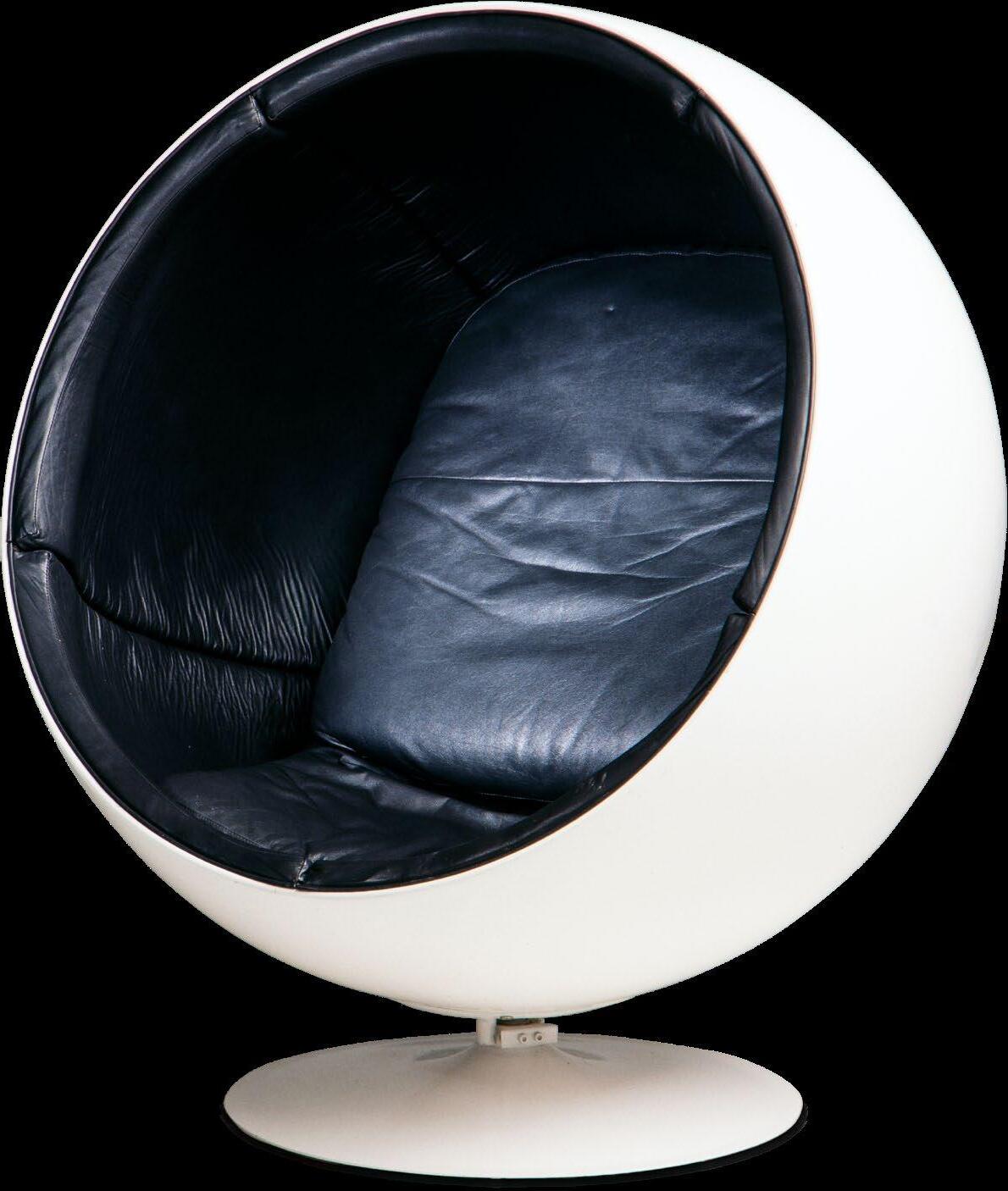
When a rare snowfall occurs in southern Europe, motorists are in trouble due to slippery conditions. Drivers in Finland are spared such concerns because in winter, Finns put winter tires on their cars. Winter tires resemble normal tires except for their steel studs, which bite into the ice and make driving safer. The first winter tires of this type were patented in Finland in 1959.
The Ball Chair, launched by Eero Aarnio in 1966, is the kind of design that leaves no one cold. It has appeared in a James Bond movie and on the cover of numerous magazines. Nothing reflects the pop spirit of the ’60s better than this fiberglass classic.

While Fiskars is known for its high-quality tools overall, its scissors are downright legendary. Of course, they are excellent scissors, but they have one important feature beyond their function: the handles are orange, which has become a Fiskars trademark. The scissors, designed by Olof Bäckström, shook up the scissors world when they were introduced in 1967: they were beautiful, comfortable to hold, and their handles were made of durable plastic. And they cut well, too. Even today, every pair of Fiskars scissors is tested before being shipped to stores. That’s why Fiskars has sometimes said that it sells ‘used’ scissors. The orange color was happenstance: the color happened to be in the machine when a test batch was made, and everyone liked it.
The faucet-mounted bidet sprayer is perhaps the most under-appreciated Finnish invention. Bidets are an old invention and exist all over the world. But bidets, intended for washing one’s bottom, can be cumbersome to use and take up space. The Finnish version is more convenient and doesn’t take up space—that’s its genius in a nutshell. The sprayer, developed by Oras in 1968, is connected to a bathroom sink faucet, and when you turn on the tap, the sprayer is ready for use. In addition to washing one’s rear end, it’s also handy for cleaning the toilet itself, or things like hosing off children’s muddy rain suits.
Every self-respecting athlete, along with more and more casual exercisers, monitors various things while working out. The most important of these is heart rate. Before 1979, this required attaching lead wires to the skin, which in turn connected to a machine that measured heartbeats. Of course, it wasn’t very convenient when running outdoors – you would have to have very long leads, at least. It was the Finnish company Polar who introduced to the market a wrist-watch receiver that measured heartbeat from data sent by a transmitter strapped to the chest.
Development along these lines has continued, and a more recent significant Finnish invention is the Oura ring, which measures a person’s sleep quality and much more.
Nokia ruled the mobile phone market for twenty years from early 90s and during that time, applied for and was granted thousands of patents. One of Nokia’s most famous inventions is the text message. The first text message was sent from a computer to a phone in 1992, ushering in the text-based phone era. The text itself was short and
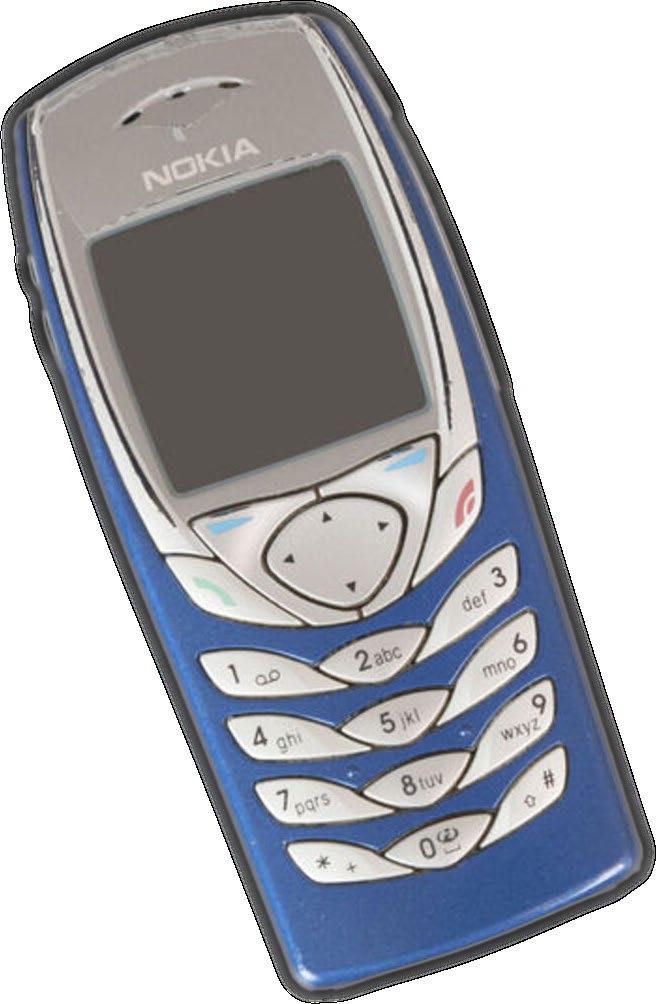
concise: “Merry Christmas.” Matti Makkonen is often mentioned as the developer of the text message, but in reality, there were many engineers involved – as there generally are.
High cholesterol is extremely prevalent among Finns. Benecol margarine, produced by Raisio Group, was introduced in 1995 and is a functional food that reduces blood cholesterol. Its active ingredient, stanol ester, has been named one of the most important discoveries in the field of nutrition in recent decades.
Nordic walking became a trend in the late 1990s. The concept was simple but innovative: to combine skiing and walking. In other words, it’s walking with ski poles, which is much more effective from a fitness point of view, as the upper body is also working all the time. So what if the kids laugh at such a middle-aged activity!
In 2019, a new type of bathroom fixture entered the market. The fixtures weren’t made of porcelain or plastic as usual, but of wood. And it wasn’t just any wood, but a waterproof wood composite developed by Woodio. It’s manufactured from woodchips and can be used to make things like sinks and bathtubs. The material was born when researchers mixed different ingredients for fun at a Christmas party. Fortunately, they still remembered the formula in the morning.
These Finnish inventions never made it big abroad: liver casserole and mämmi
Liver casserole is prepared from ground liver and rice, and even Finns either love it or hate it—there are many who also love to hate it! Mämmi, on the other hand, is a malty, rye-based dessert eaten at Easter, which looks like something that’s been fished out of a toilet bowl. These two dishes have not spread very far beyond Finland’s borders, so it appears there is a need for continued product development – or at least for better branding. s
One of Nokia’s most famous inventions is the text message.
I’Ve seen mAny hotels in my life. These days, I mostly travel for work, to make author appearances in different parts of Finland and occasionally beyond. Traveling for work offers me a great opportunity to see hotels and places I wouldn’t necessarily come across as a tourist.
In one town made famous by its cross-country skiers, the hotel I stayed in was a studio apartment upstairs from a local restaurant. The view from the room looked out onto a cemetery. But it was only fitting – at the moment, I was working on a plan for a collection of horror stories. From the windows of another lodging establishment, founded by two young women in Northern Ostrobothnia, the view was endless misty ice. From the windows of a hundred-year-old hotel in Barcelona, I saw only a narrow slit of a courtyard. In Cologne, in a room on the seventh floor, I remember a broad windowsill, the length of the entire wall, with space enough that I could stand up on it. That trip inspired me to boldly throw myself into the novel I was planning at the time.
After mAking An author appearance, a hotel room is above all a place for rest and relaxation. But sometimes stories – and some certain stories – are born more easily in the self-imposed isolation that hotel living affords. Creativity flourishes in bounded spaces. So I also check into hotels to write.
Hotel life is a way to detach from the everyday grind, a way to step into a bubble where an adult person can let themselves be taken care
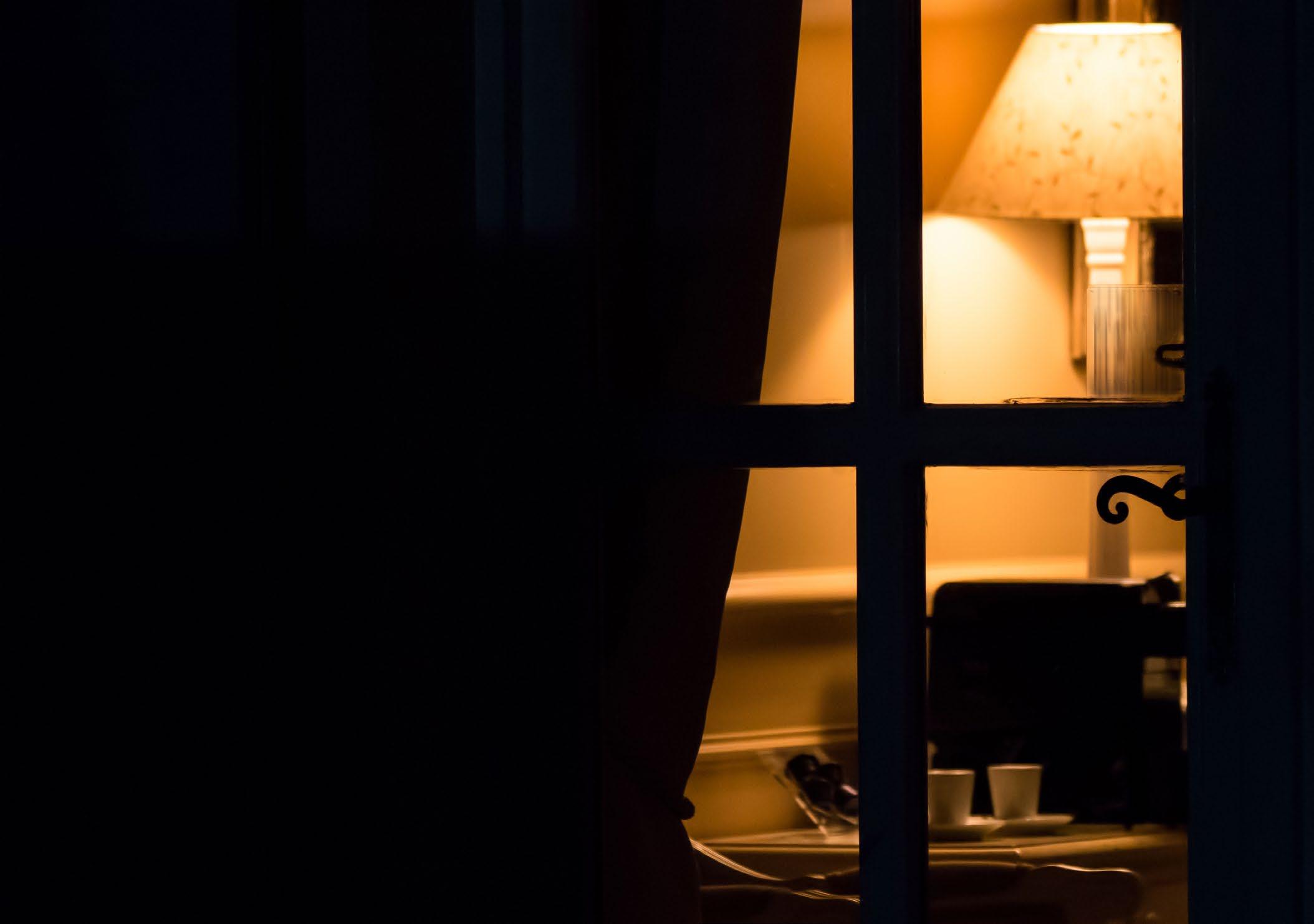
of. Goodbye dishes, goodbye mental load! Living in a hotel feels safe and predictable, with its small check-in rituals, understated white plastic key cards, friendly chambermaids, and breakfast waiting in the morning. The writer is stripped of other responsibilities and has no choice but to write.
I like to believe that I’m an easy hotel guest. My first task is to hang the sign on the door that politely asks others to leave me alone. In the modern monk’s cell of my hotel room, I am both separated from the world and one with it. The sounds of traffic and people behind the window are no distraction. On the contrary, the muffled conversation of a group passing by the room or the soft bang of a door remind me that life goes on outside my writing bubble. Maybe that’s why my memories of hotels often revolve around windows and the worlds beyond them.

Hotels are an excellent breeding ground for stories, even if only for the traveling itself. I’m not the kind of writer who, like a nocturnal predator, nabs real conversations or people to use in their stories. But spending time both surrounded by human life and simultaneously on its edges revs a story engine that is fueled by being in this liminal state, by transience and movement.
CHecking out of a hotel is rarely a sad moment. I’m often already missing home when I close my suitcase, pull on my shoes, and check
for the third time whether I packed my phone charger. Closing the room’s door for the last time and returning the plastic key card to reception is both a mechanical task to be executed and a sacred ritual of taking leave. When I depart, I know that while I may never stay in that hotel again, I will always find myself back at a hotel. s
Magdalena Hai is an award-winning Finnish children’s and young adult author whose books have been sold into more than twenty languages. When at home, she drinks too much coffee and photographs the invertebrates in her garden.
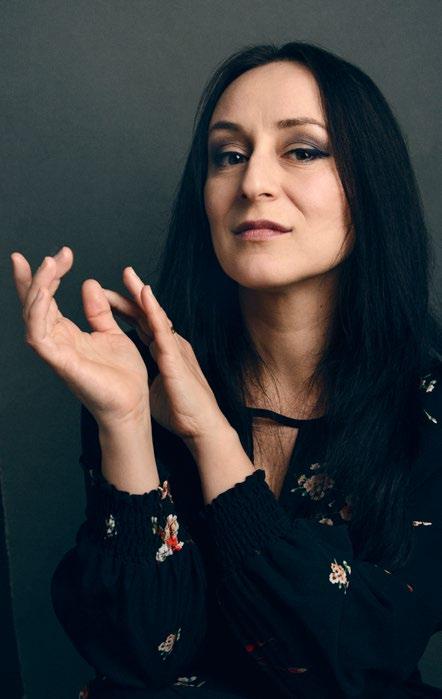
Sometimes stories - and some certain stories - are born more easily in the self-imposed isolation that hotel living affords.
Creativity flourishes in bounded spaces.
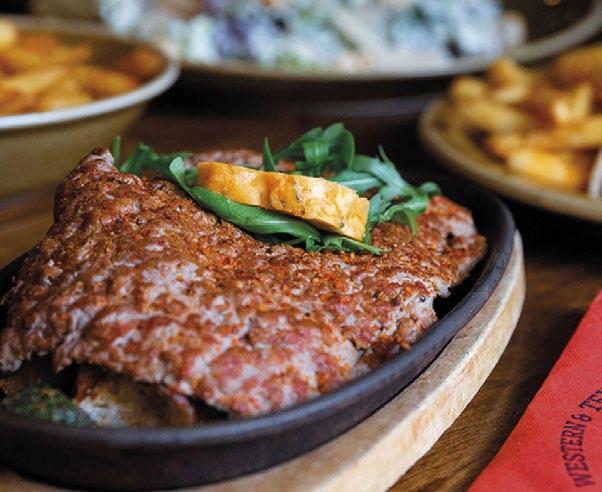


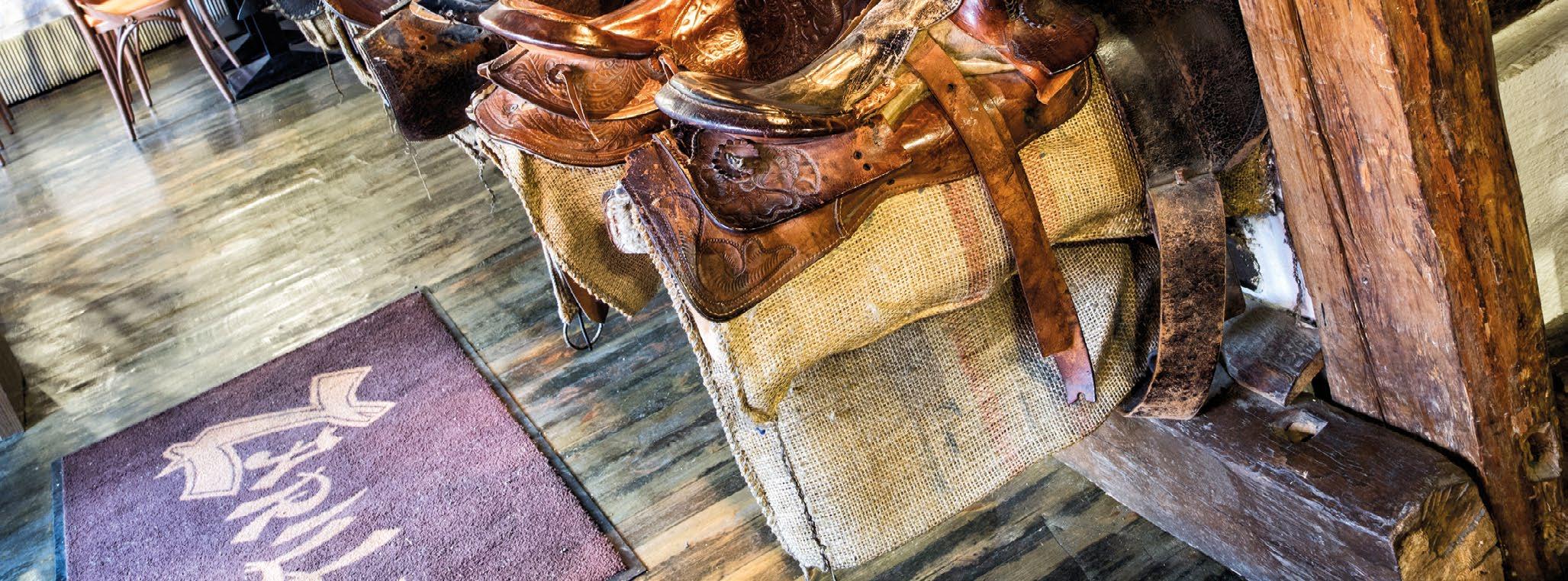


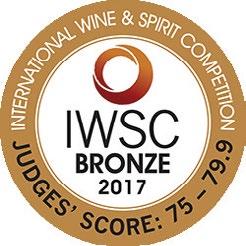


Delicious table served lunch and private catering for events and meetings.
Kirkkokatu 10





Our high-quality restaurants are located in the city center!




